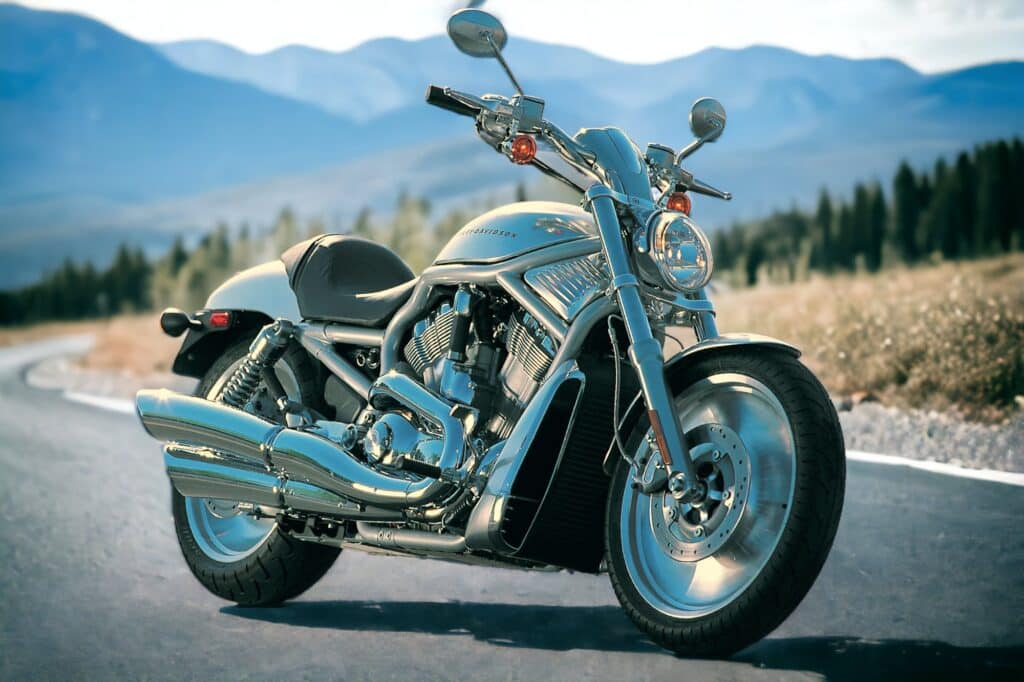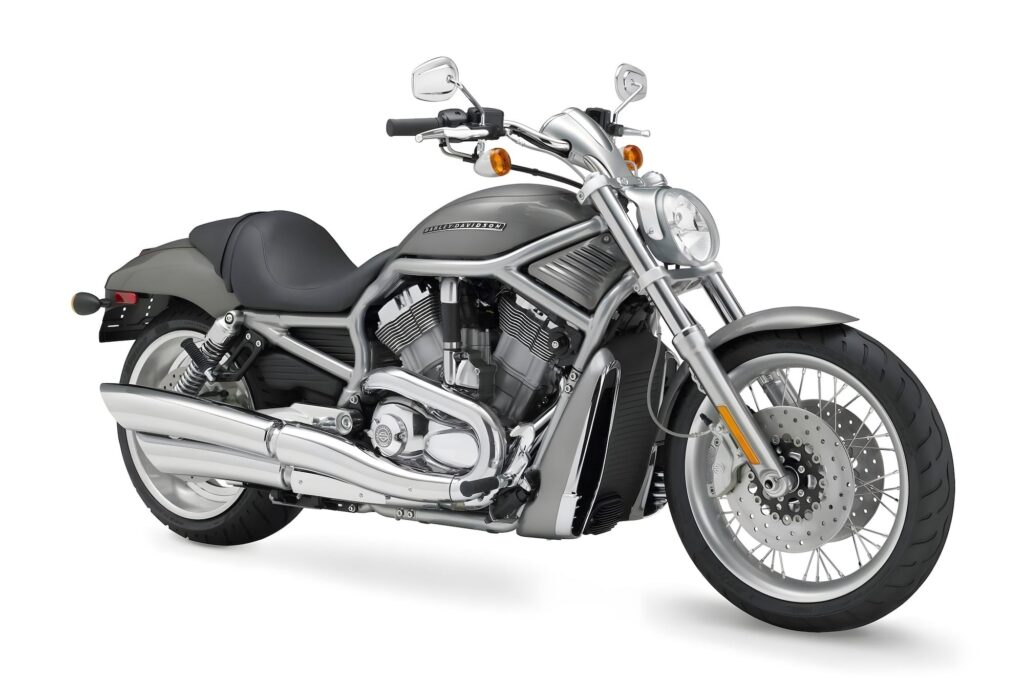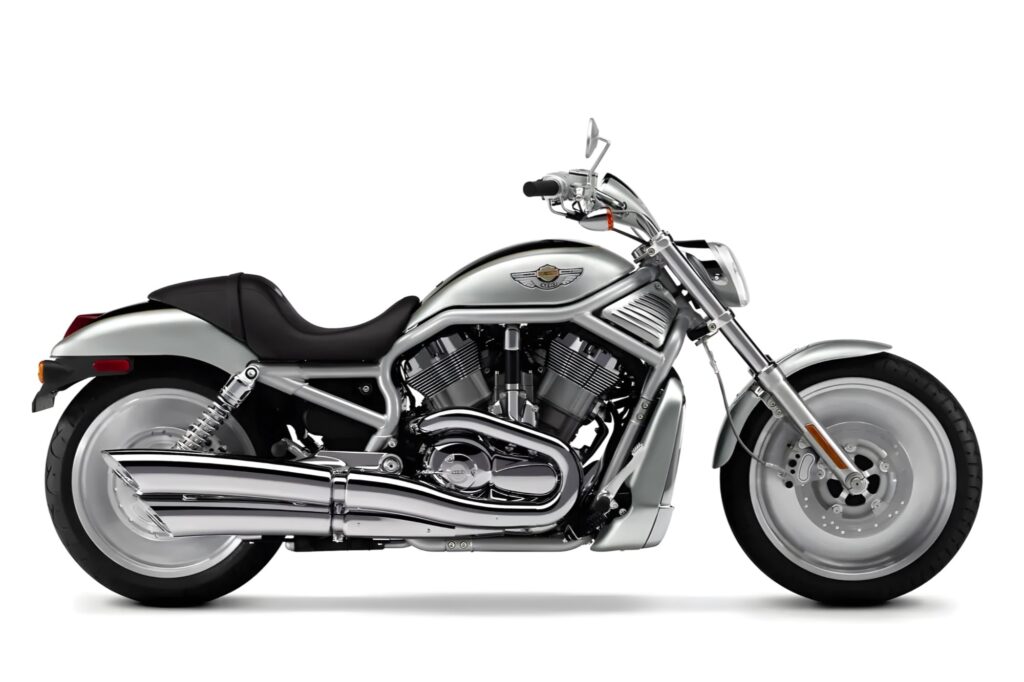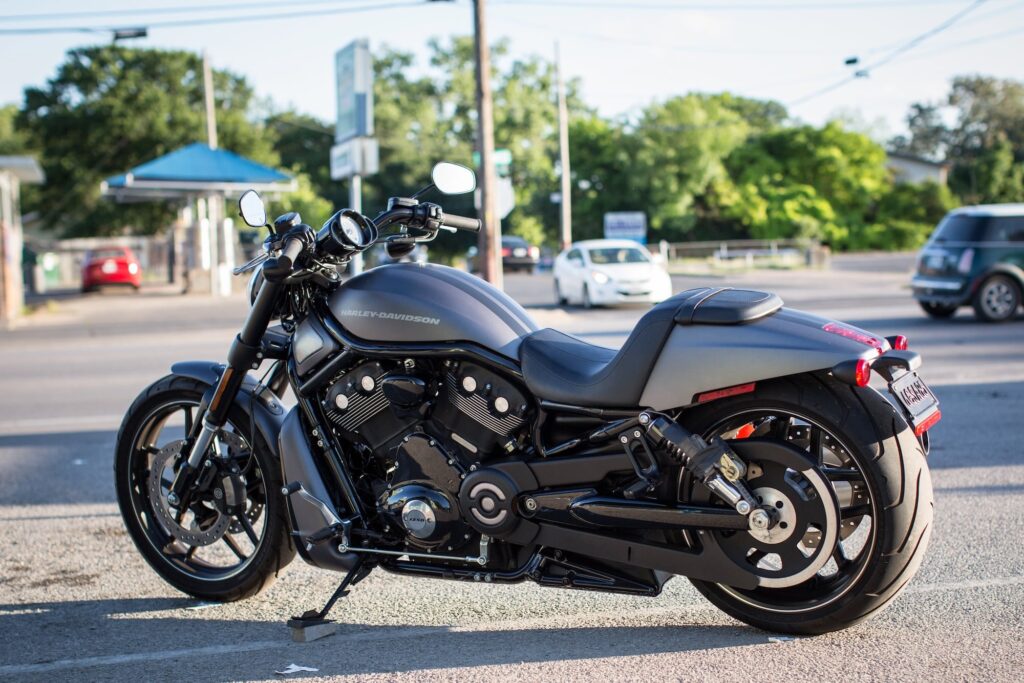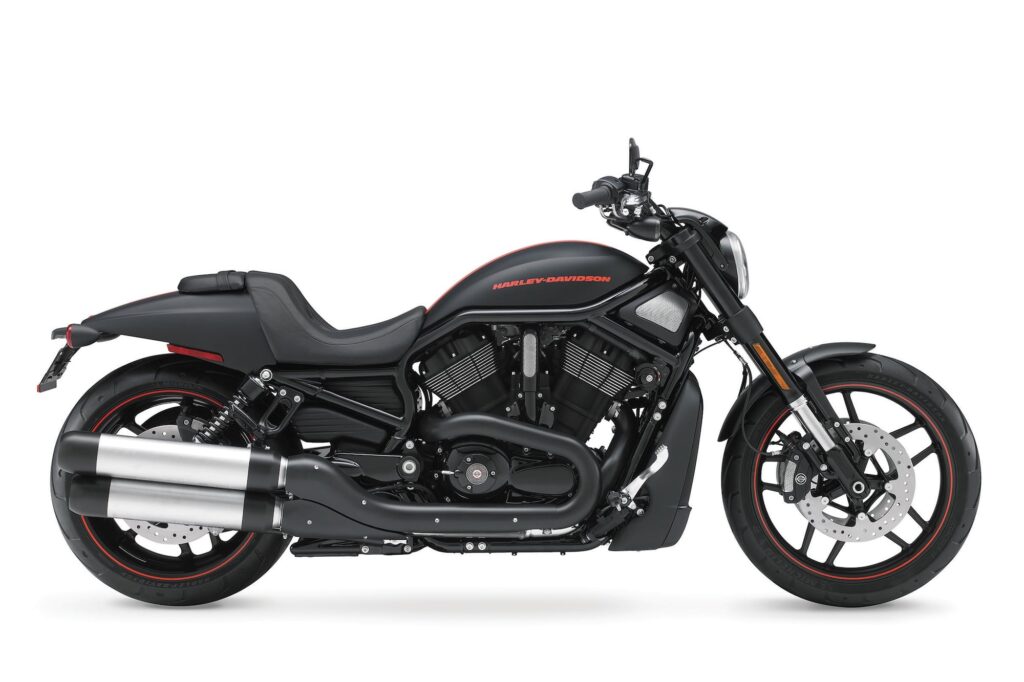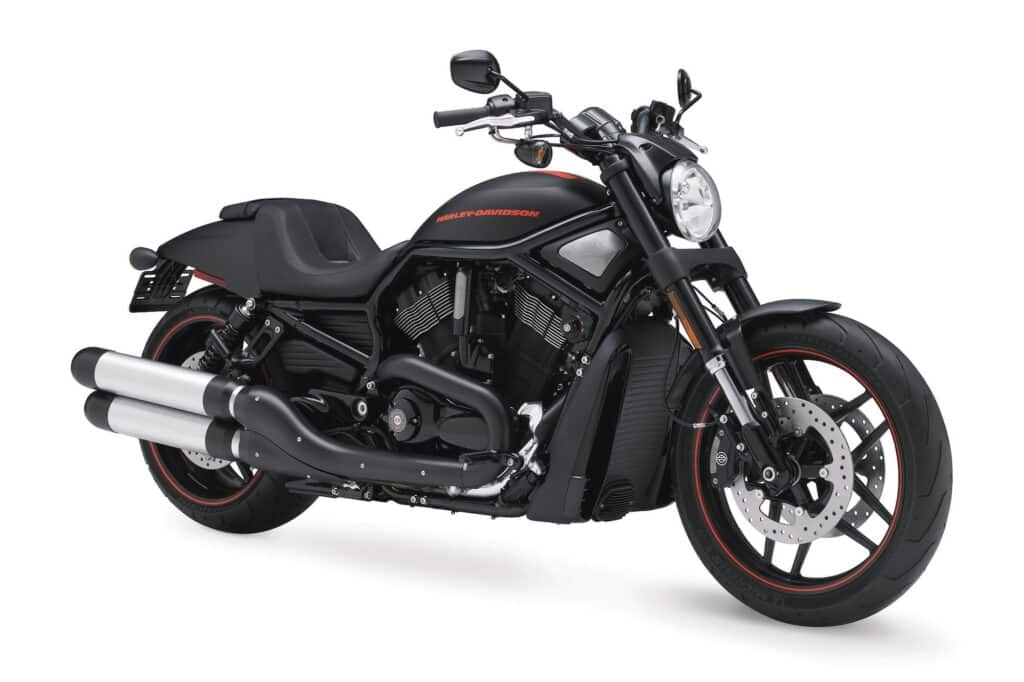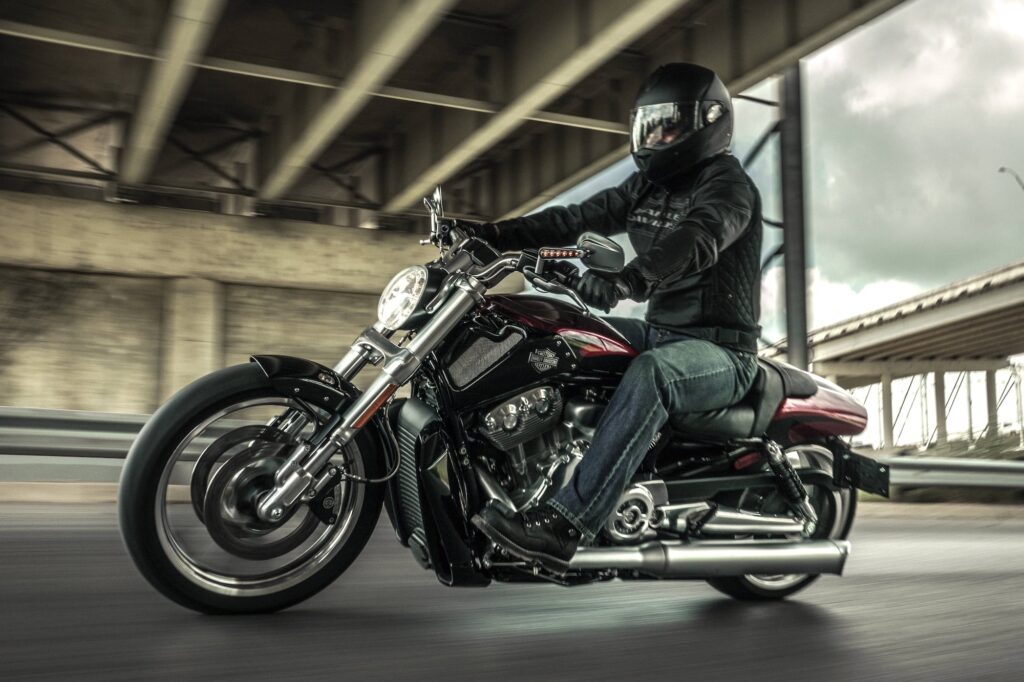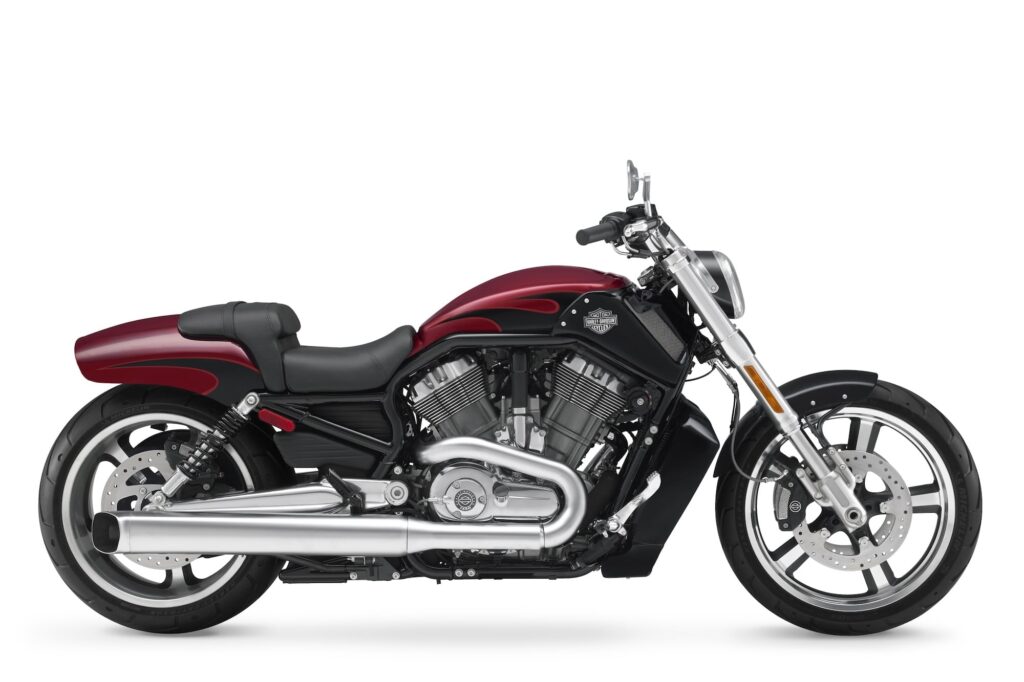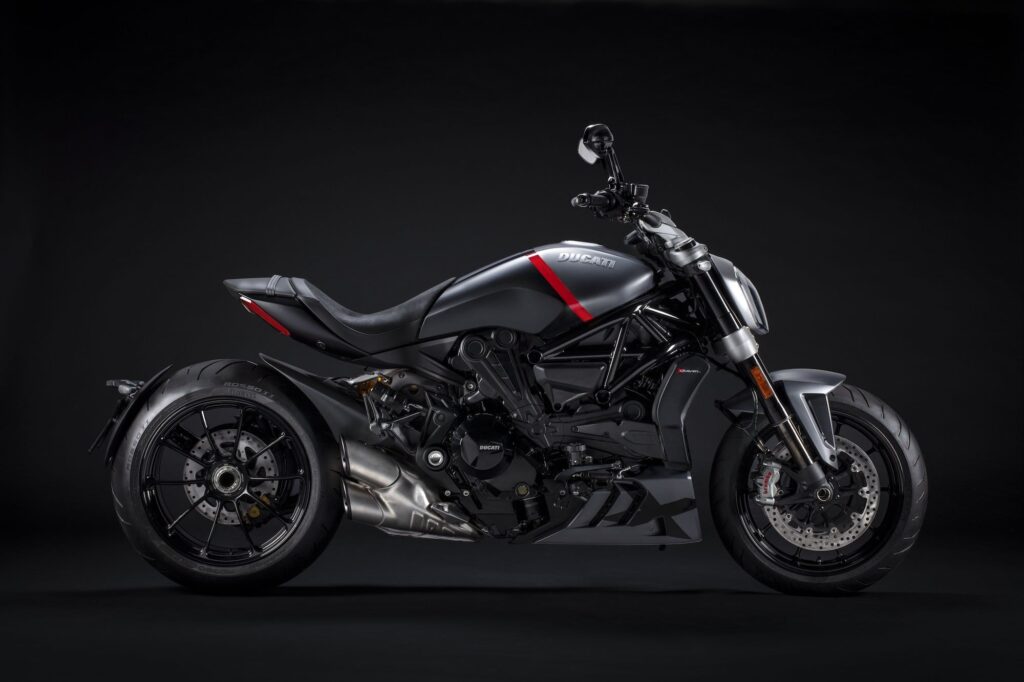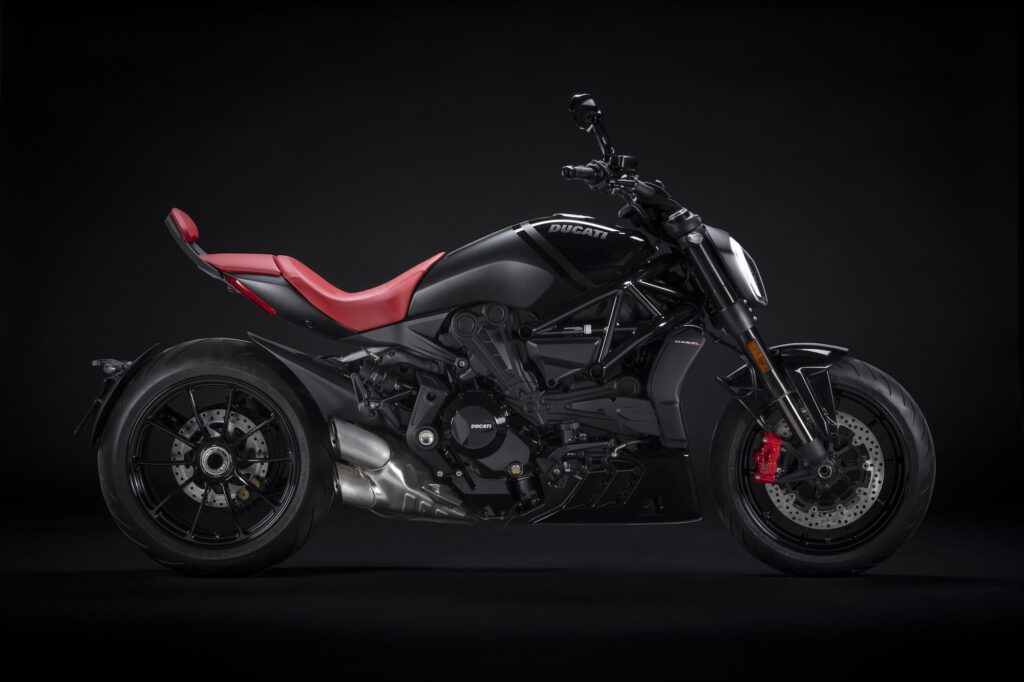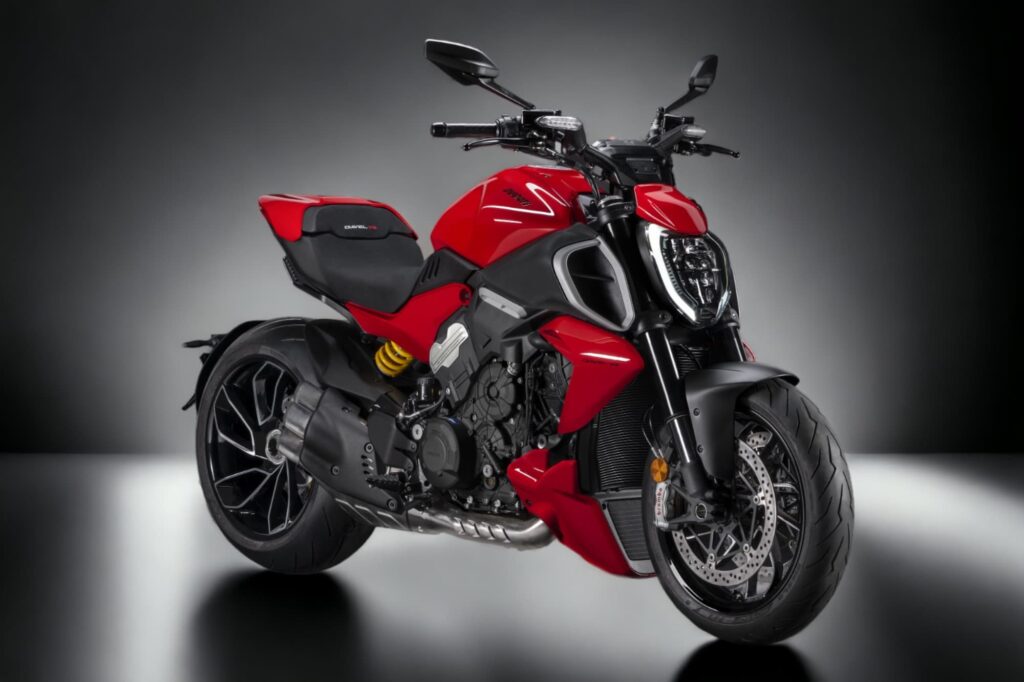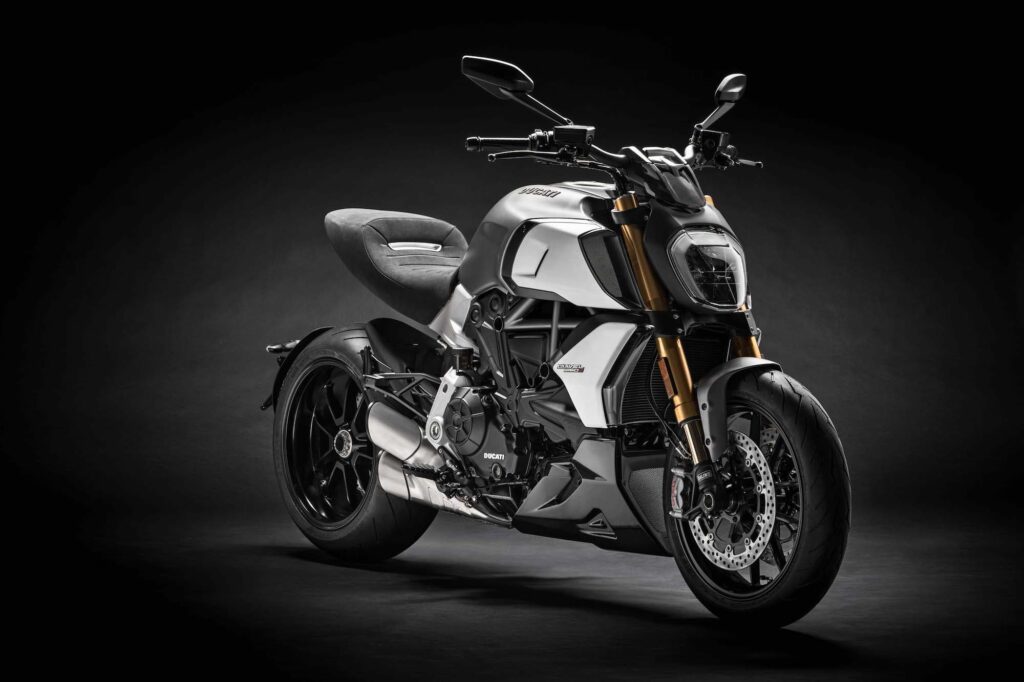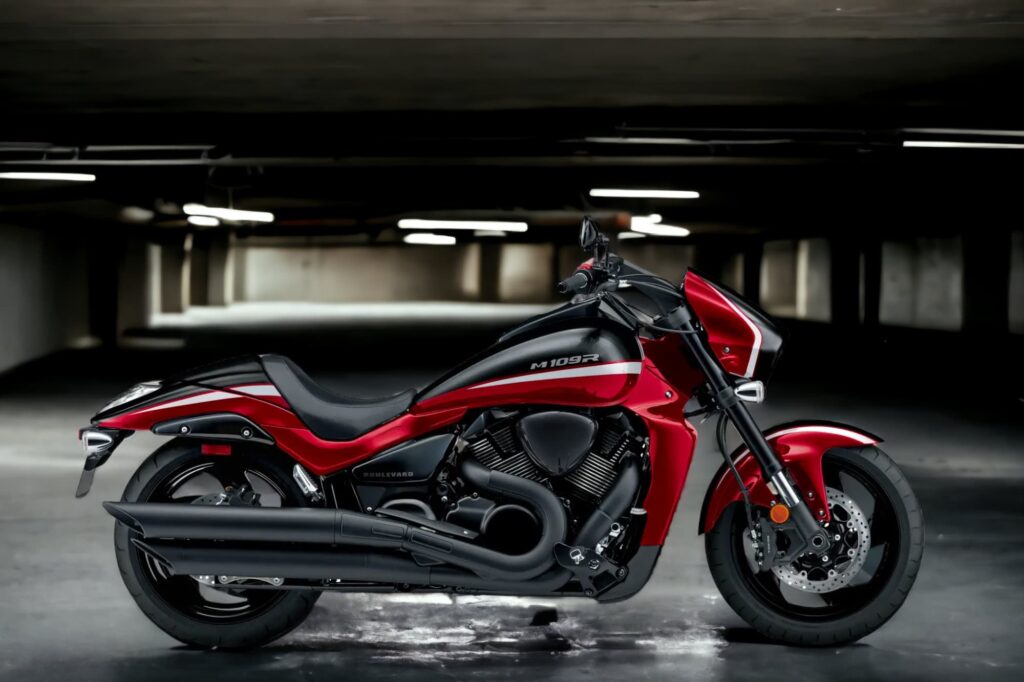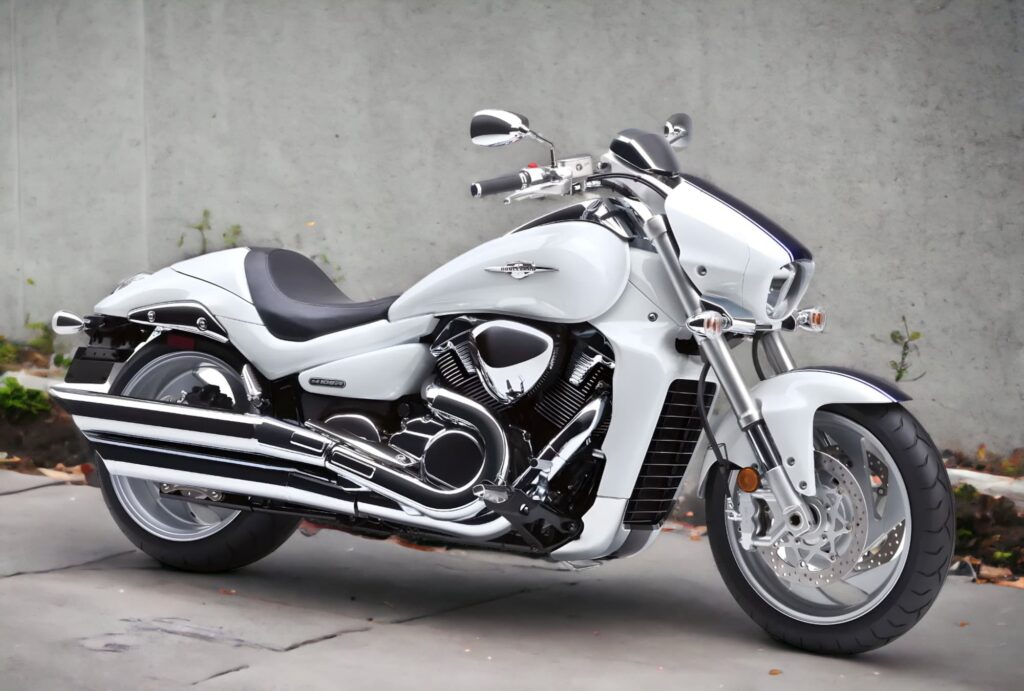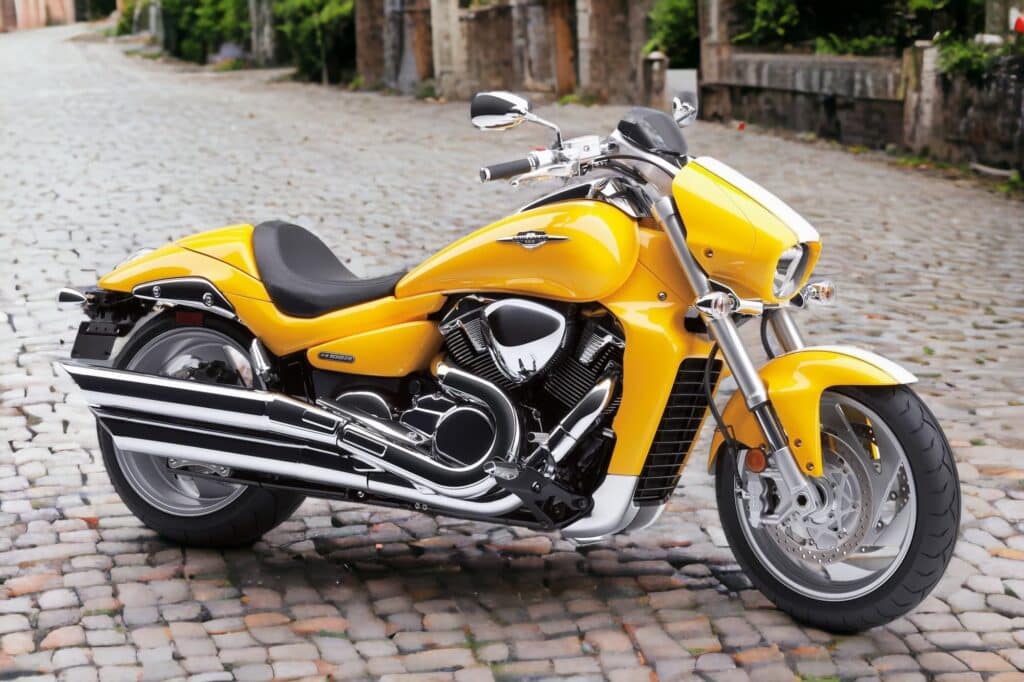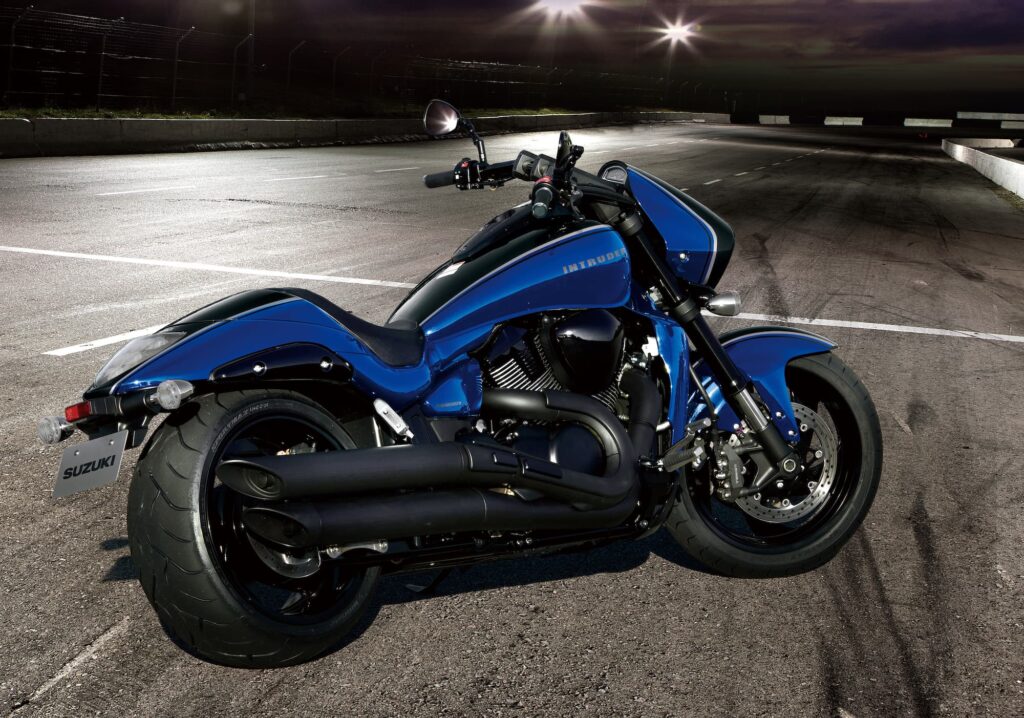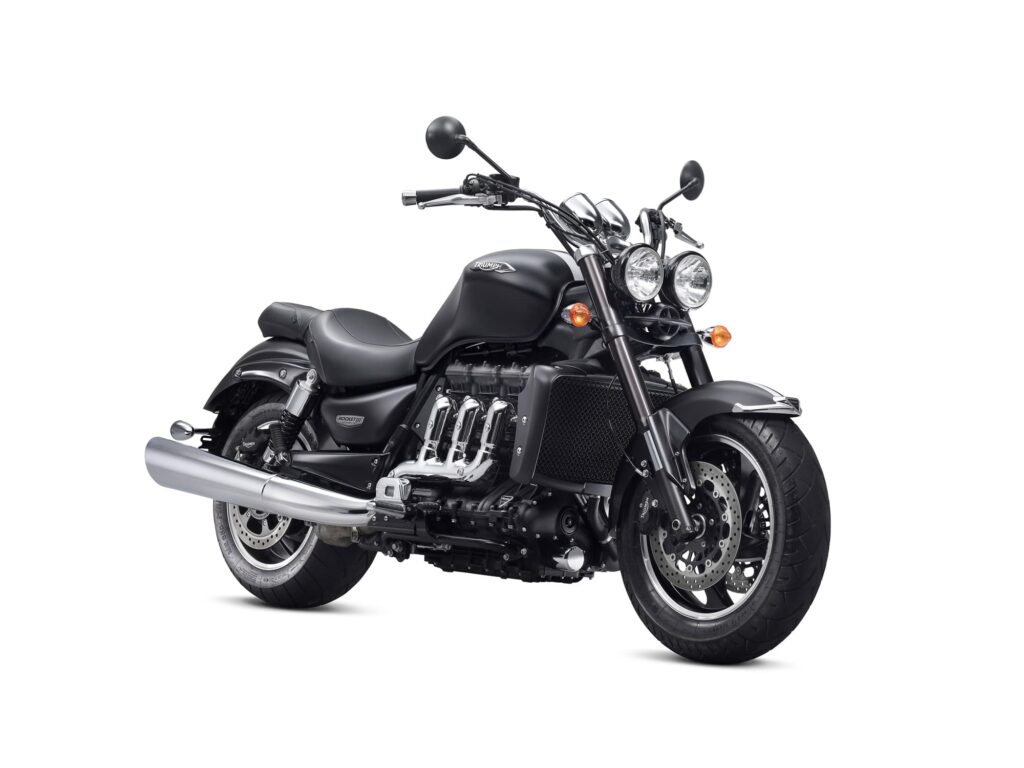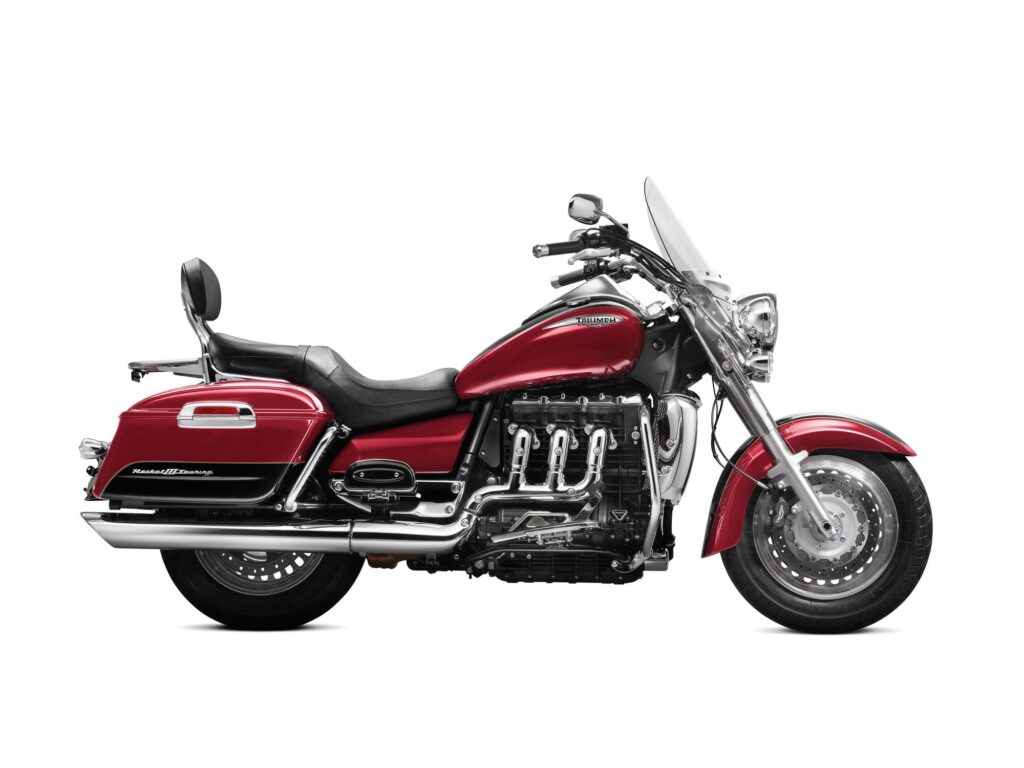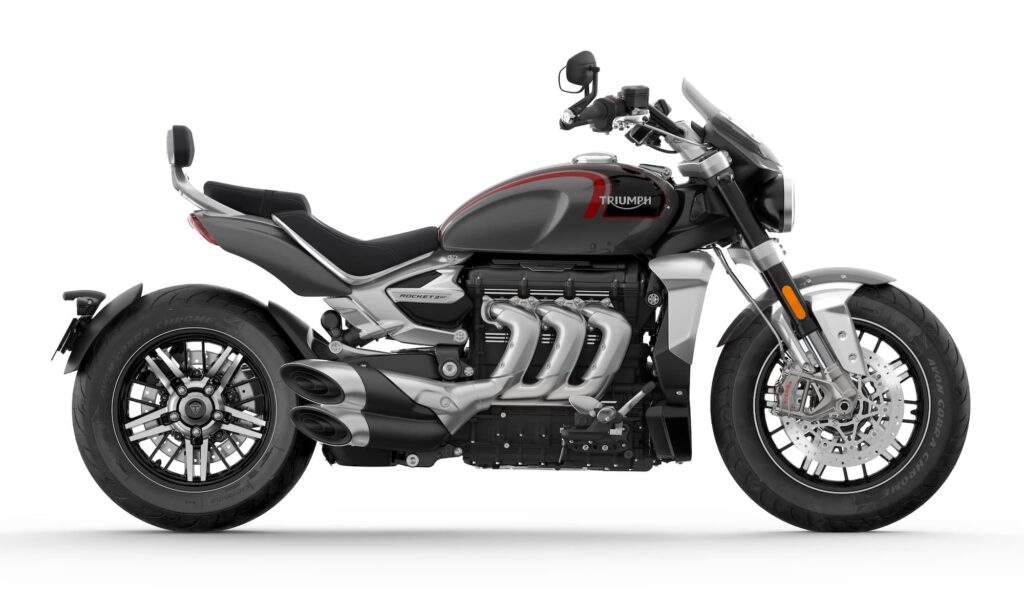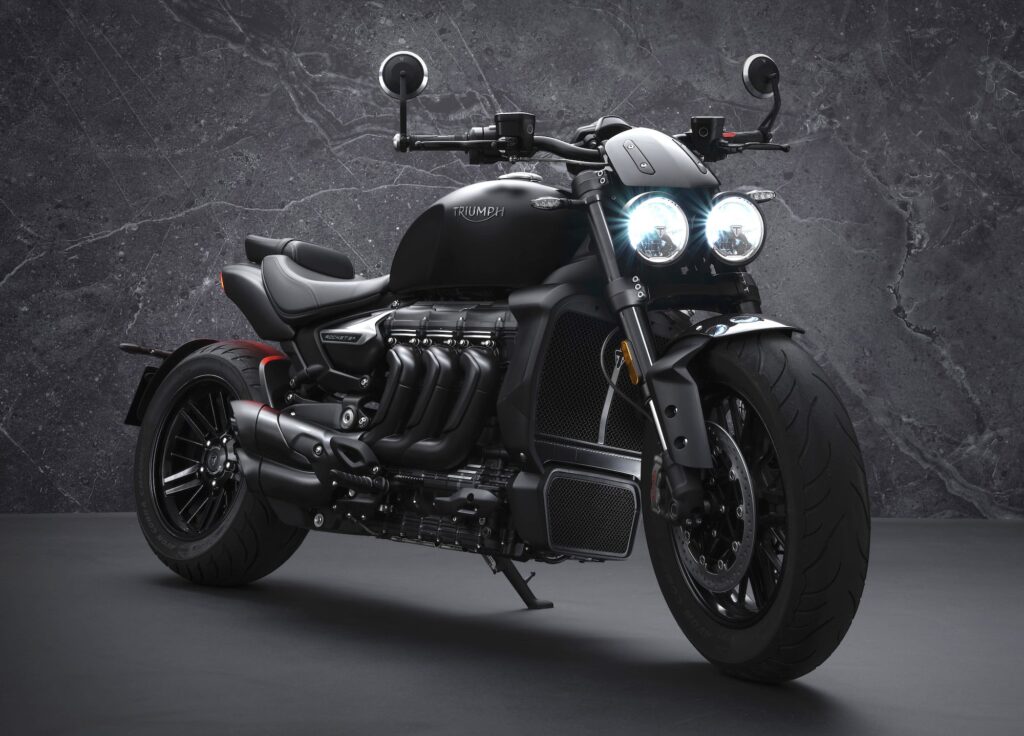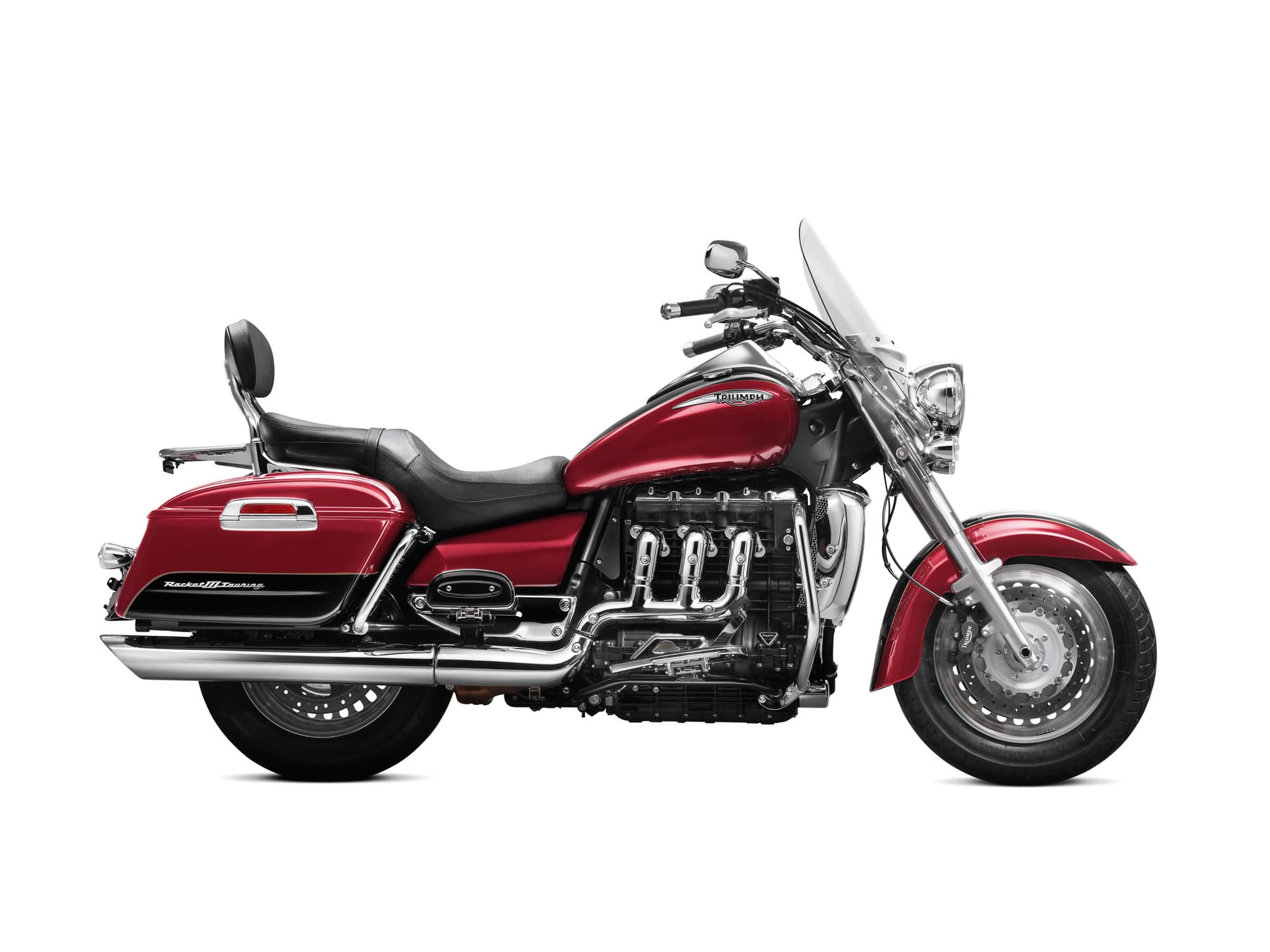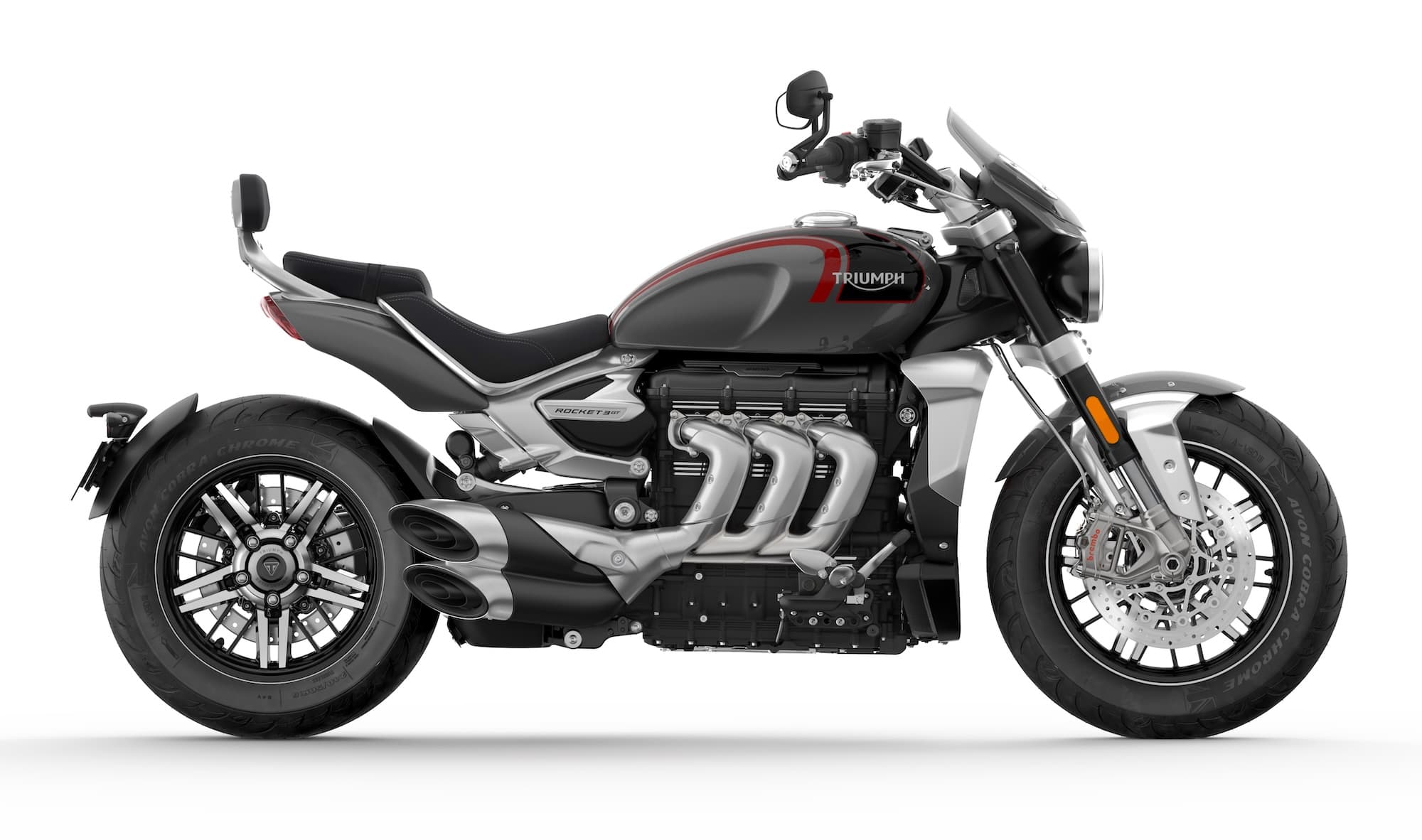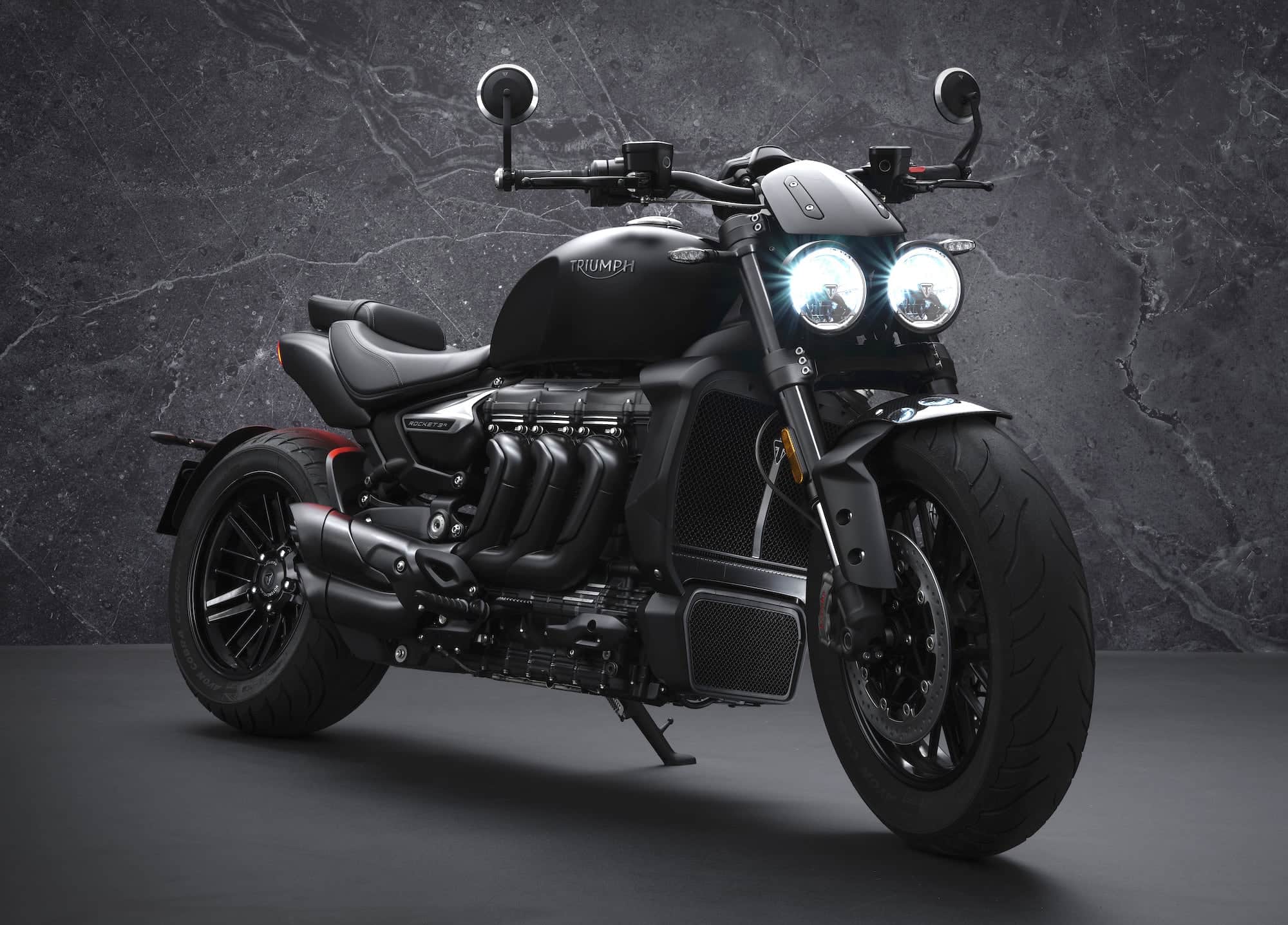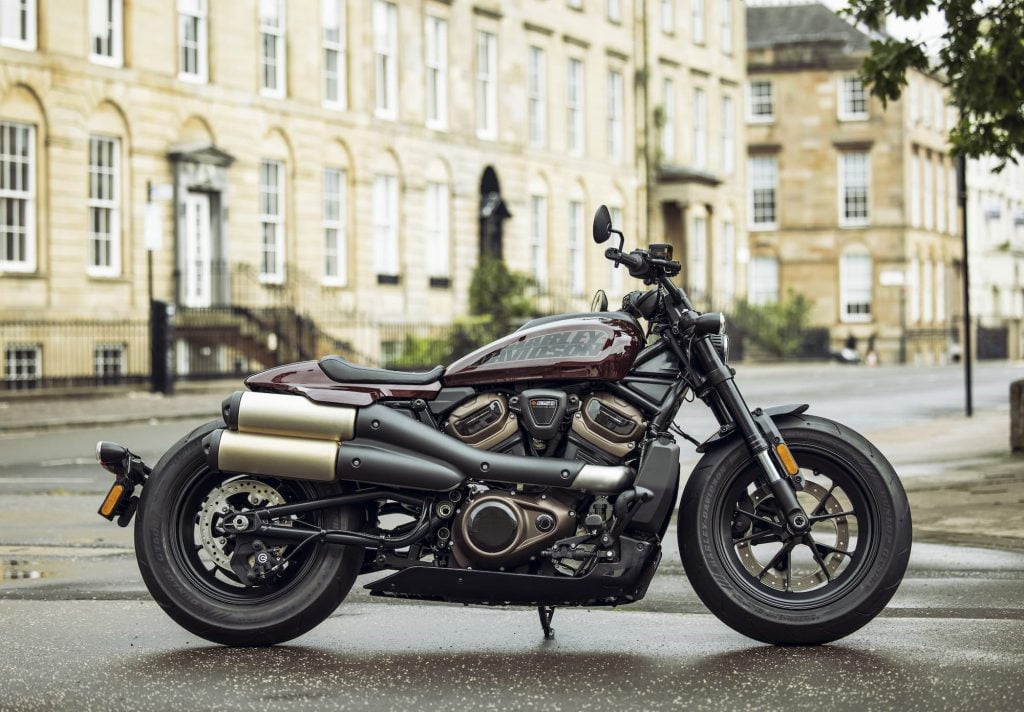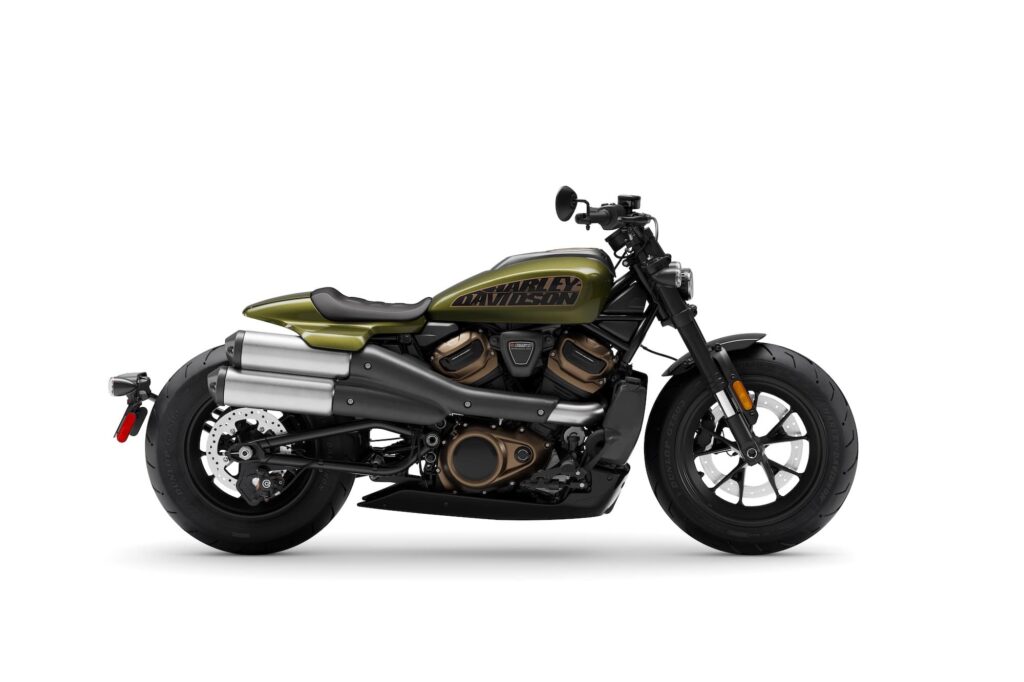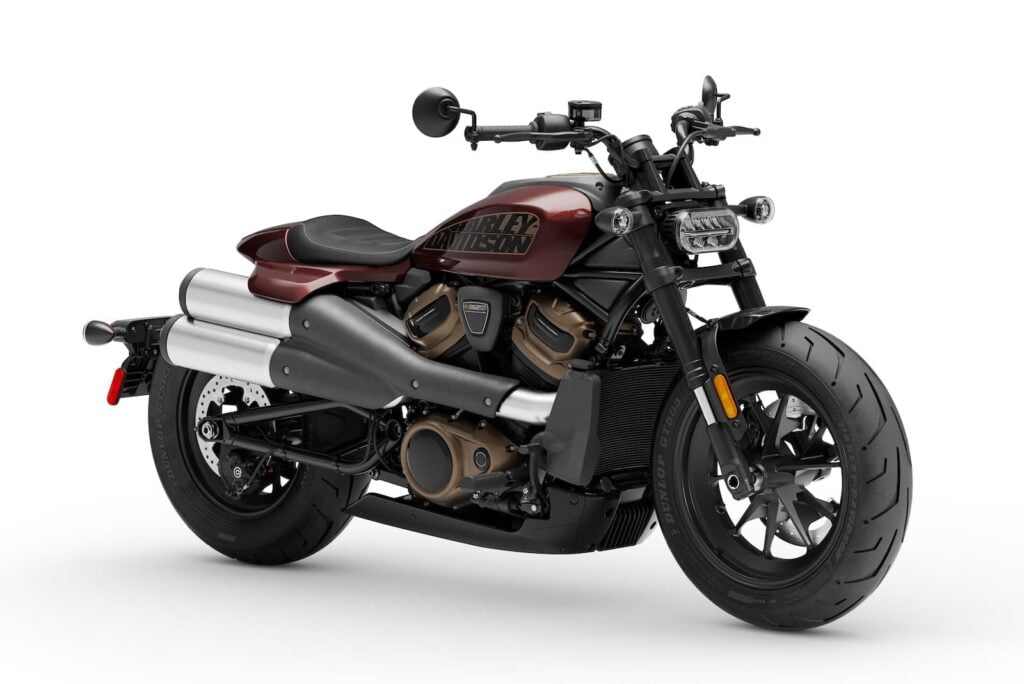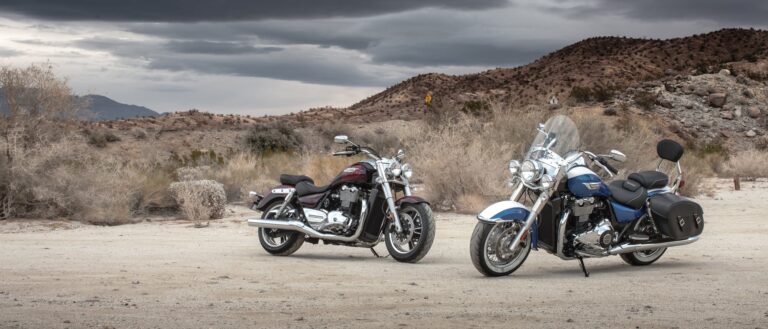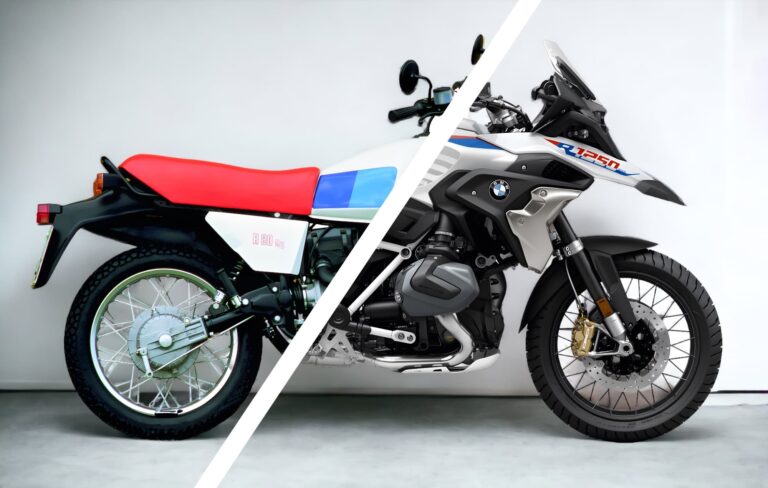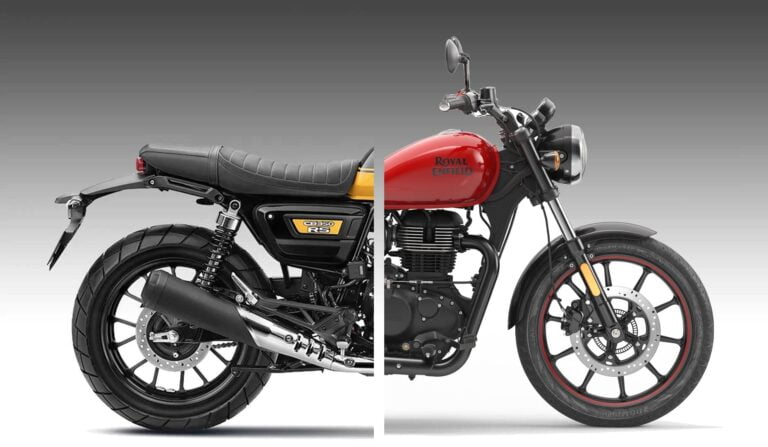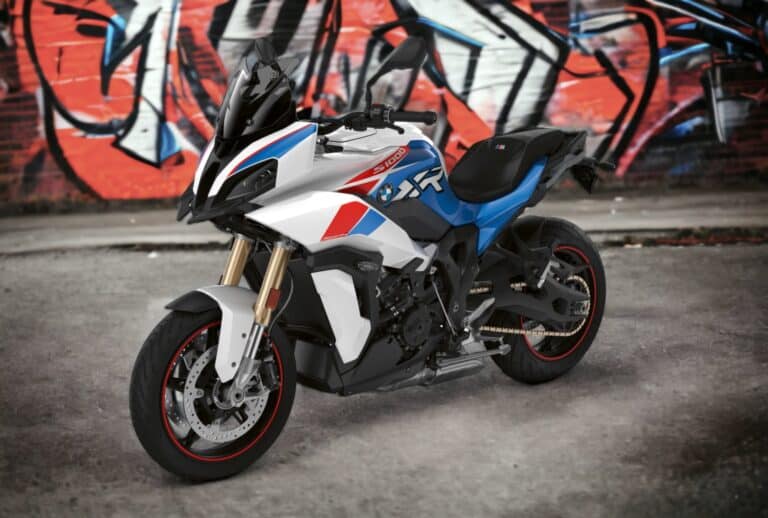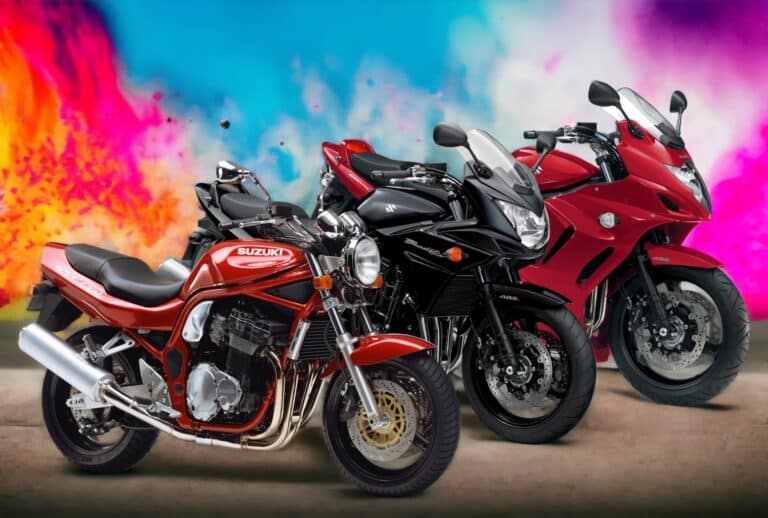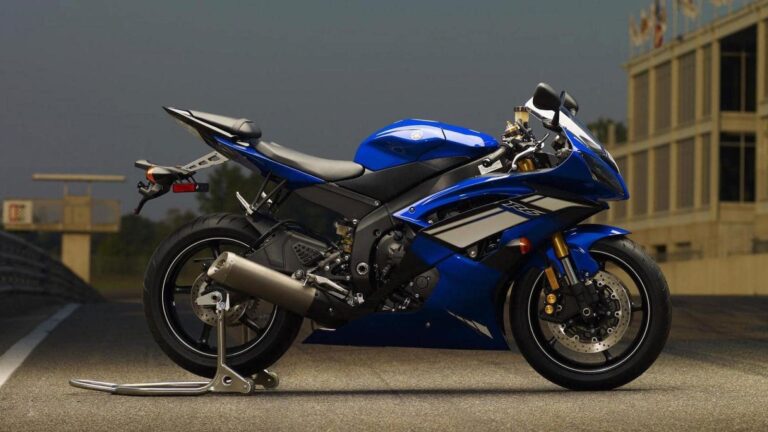This is a complete model history and buyer’s guide for one of the oddest but coolest motorcycles around: the V-Rod, also known as the VRSC, or by one of its sub model names (below).
Ask any sportbike lover whether they’d ever consider a Harley-Davidson, and one of the first things they might say would be “Well, if I had to have a Harley, it’d be a V-Rod.”
Meanwhile, Harley diehards (especially in the US) often say it’s not a “real” Harley, though they’ll admit it’s fast and possibly even cool, and sportbike riders are still tough to convert to the world of big heavy V-twins.
But things have changed as time goes on. Even though the V-Rod was never the brand’s most popular bike, the fact that Harley-Davidson discontinued them in 2017 — and that they were so good — means that their value is holding steady, and sometimes increasing. And for some models, increasing dramatically. At the same time, sport riders are getting older, and eyeing these ageing classics and thinking: Could this be it?
Recently, I took a V-Rod for a spin over in northern LA (detailed in a separate article), and before I did so, I looked into the history of the V-Rod models to try to figure it out. Below is everything I found out, including
- What makes the V-Rod interesting and unique
- The model history: How the V-Rod evolved over time, and what the differences between the models are
- What competitors really exist (there are a few now, but there weren’t many before, and they’re all a bit different)
- What replaced the V-Rod conceptually
Here goes!
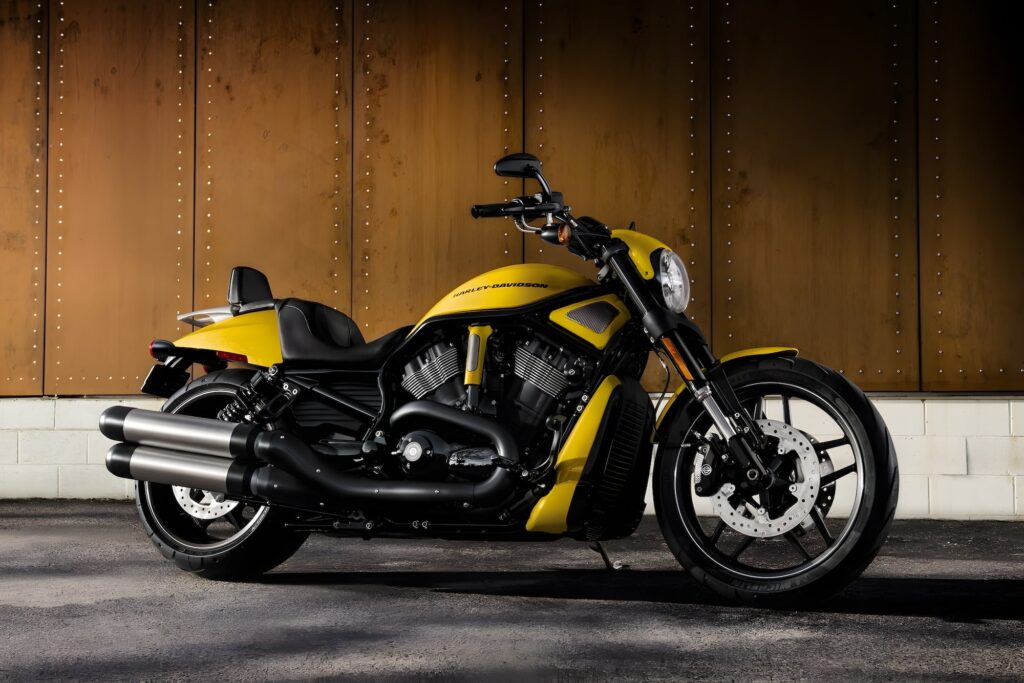
Are you obsessed with motorcycles?
Well, I am. That’s why I created this site — as an outlet. I love learning and sharing what others might find useful. If you like what you read here, and you’re a fraction as obsessed as I am, you might like to know when I’ve published more. (Check the latest for an idea of what you’ll see.)
What is the V-Rod and What Makes it Special?
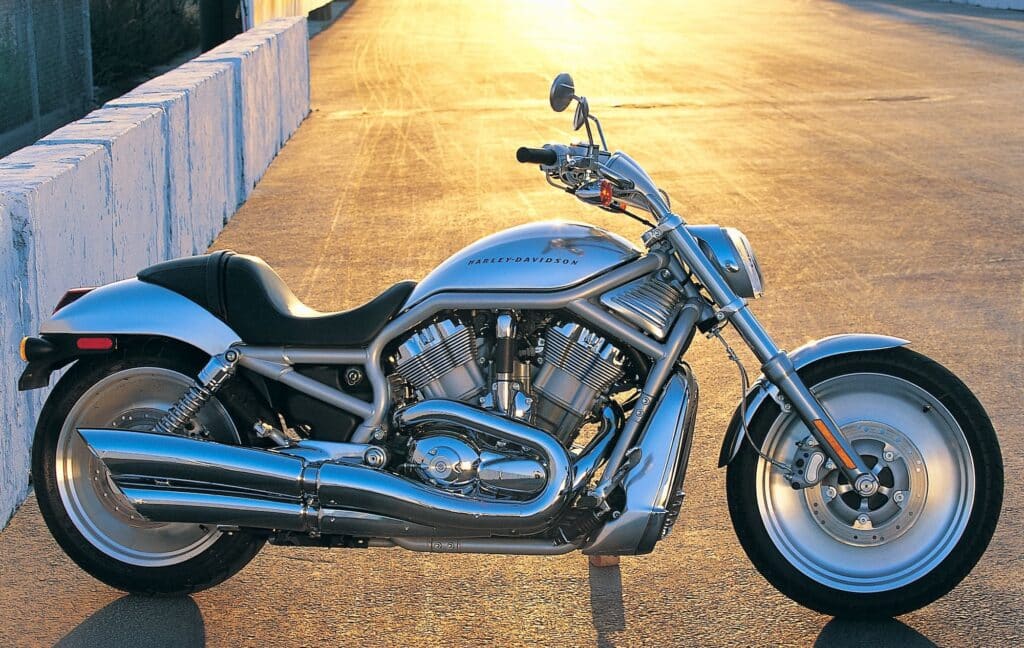
The Harley-Davidson V-Rod or VRSC line was one of the attempts by the brand to enter the 21st century and to appeal to non-American markets at the same time.
VRSC, by the way, stands for V-Twin Racing Street Custom. This is notable because Harley-Davidson model acronyms don’t always directly correspond to words… well, not obviously, anyway!
Buyers of Harley-Davidsons like them for a lot of things, but one of them is heritage. In an age where some motorcycles are undeniably high-performance but so advanced that they seem to ride themselves, buying an old-world bike with a huge stonking air-cooled motor and no ride aids has a certain appeal.
If you really don’t get the appeal of an old-world motorcycle, think of using a mechanical watch, taking a tourist ride on a steam train, or going sailing. It’s not the most practical way of telling the time, getting around, or travelling, but that’s also the point.
That’s the appeal of an air-cooled V-twin with a belt drive. There’s not much to its technology. It’s easy to understand. It also makes a big raucous noise and feels and looks good, to boot.
Which is the conundrum of the V-Rod. The Harley-Davidson V-Rod is not old-fashioned. Its engine, named the “Revolution”, was designed by Porsche, and has features we regularly see in modern motorcycles, like:
- Liquid cooling, which helps keep it under control as it makes more power (see my article on air cooling vs liquid cooling)
- Four valves per cylinder, which helps with breathing
- Overhead camshafts, a more complex design that helps run the four valves, and is also more conducive to higher engine speeds
The more complex Revolution engine is still nice to look at, but not in everyone’s opinion. It’s not a motorcycle you can “see through” to the same degree that you can with most Harley-Davidson engines (also many Triumph ones, by the way, despite being liquid-cooled).
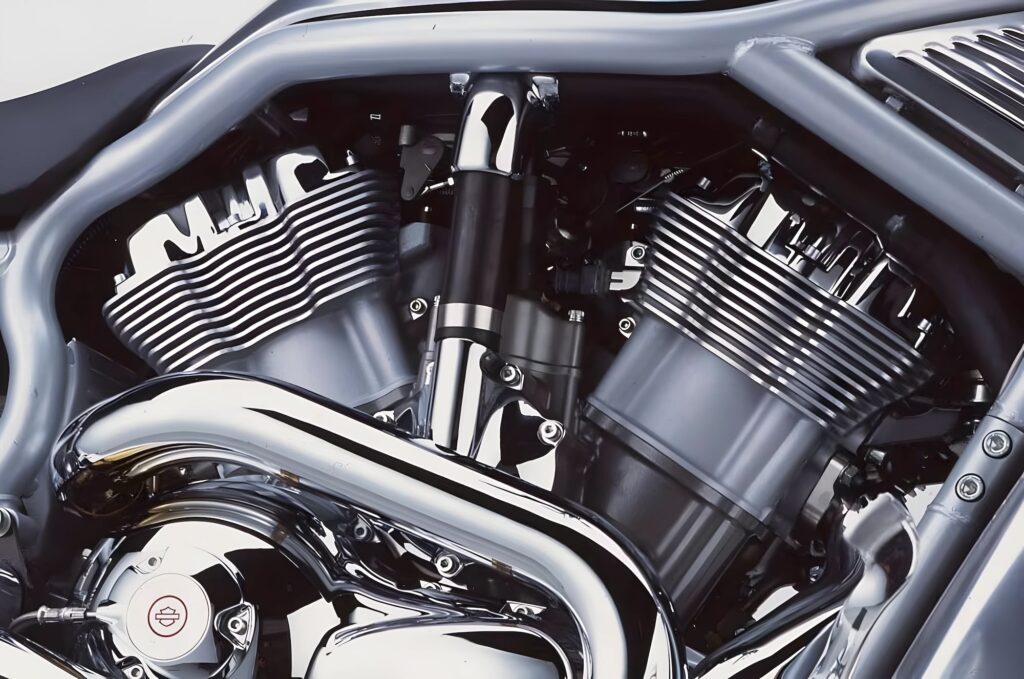
Aside from engine tech, Harley-Davidson used the V-Rod platform to try out all kinds of new things, like ABS, inverted forks, and more.
You could say that the VRSC never really caught on. But the liquid-cooled engine technology spawned a further series of engines, like the smaller Street 750 and 500 motorcycles (“Revolution X”) and the Pan America and Sportster S (“Revolution Max”).
These days, the V-Rod is being a bit of a collectible classic, and prices aren’t dropping (and are in many cases rising). So let’s have a bit of a look at what changed between them.
Changes in the 2005-2008 years: Suspension, Engine, Tyre
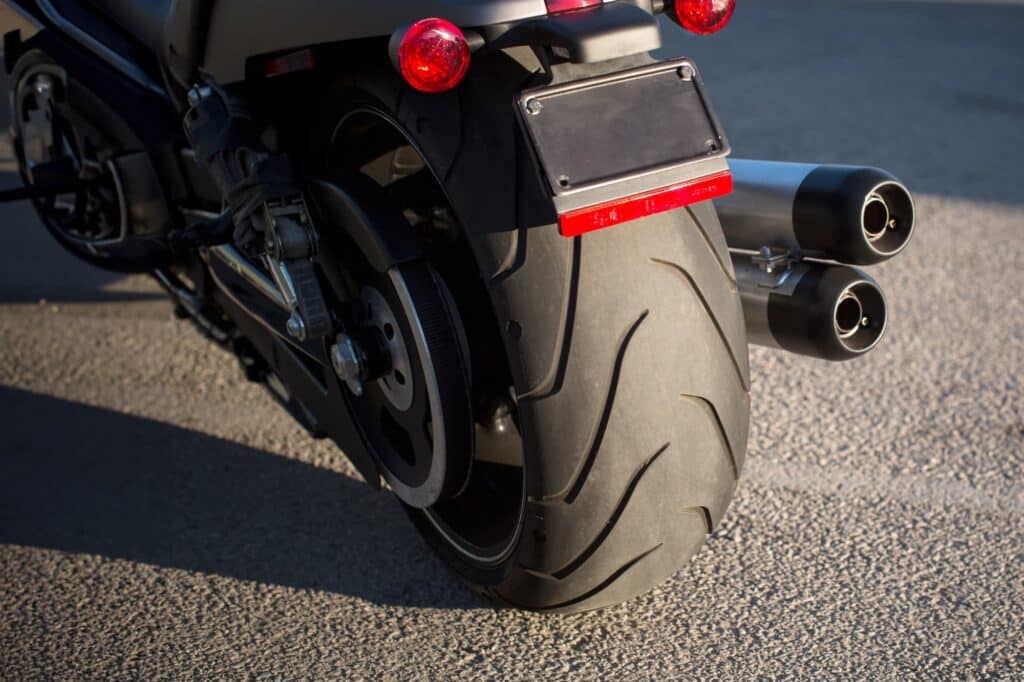
There was a period of turmoil in the V-Rod line between 2005 to 2008, when many specs changed in the V-Rod line, sometimes within a model designation.
In 2005, Harley-Davidson released the first CVO/Screamin’ Eagle V-Rod with a larger 1247 cc engine. This engine would become the mainstream V-Rod engine a few years later.
In 2006, the V-Rods got Brembo 4-piston calipers.
2007 was the last model year for the 1130 engine, but it was also the first model year for a couple of model designations, like the VRSCAW and the Night Rod Special. So the first of those had the 1130 model.
And from 2007, all V-Rods would get a 5 US Gal / 18.9L tank.
From 2008, Harley-Davidson updated the engines from the 1130 to the 1250. There were two major engine generations for the Harley-Davidson V-Rod. They’re called the 1130 and 1250 generations colloquially.
Both generations of Revolution engine are 60-degree liquid-cooled V-twins with dual overhead cams and four valves per cylinder. They all have fuel-injection. They also all had a 5-speed transmission — this stayed consistent until the V-Rod retired.
| Item | Gen 1 (1130) | Gen 2 (1250) |
|---|---|---|
| Years | 2002-2007 | 2008-2017 (CVO/SE: 2005-2007) |
| Capacity | 1131 cc (“1130”) | 1247 cc (“1250”) |
| Bore / Stroke | 100 x 72 mm | 105 x 72 mm |
| Compression ratio | 11.3:1 | 11.5:1 |
| Clutch | Regular | Slipper |
| Peak power | 86 kW / 115 hp @ 8250 rpm | 92 kW / 125 hp @ 8250 rpm |
| Peak torque | 100 Nm / 74 lb-ft @ 7000 rpm | 115 Nm / 85 lb-ft @ 7000 rpm |
As you can see, the Gen 2 engine is significantly more powerful, making 10-15% more power and torque.
The Gen 2 engine also brought with it the features of a slipper clutch and optional ABS.
Model Range Overview
When thinking about V-Rods, there are really three dimensions to consider.
- Engine: Is it the earlier 1131 cc engine, or the later 1247 cc engine?
- Controls: Are they mid-controls or forward controls?
- Tire: Is it a 180-profile, or 240 profile?
- Style: Is it a chromed-out cruiser or a blacked-out hot rod?
That pretty much maps them out — other than the CVO/SE ones (which I’ll detail in a smaller section below).
But there are a few other things to consider, too, plus an awkward period between 2006 and 2008 when things got confusing.
| Item | VRSCA / B | VRSCR “Street Rod” | VRSCD/A “Night Rod” | VRSCAW | VRSCDX “Night Rod Special” | VRSCF V-Rod Muscle |
|---|---|---|---|---|---|---|
| Years | 2002-2006 VRSCB: 2004-2005 only | 2006-2007 | 2006-2008 | 2007-2010 | 2007-2017 | 2009-2017 |
| Engine cc | 1131 | 1131 | 2006-2007: 1131 2008: 1247 | 2007 only: 1131 2008-10: 1247 | 2007 only: 1131 2008+: 1247 | 1247 |
| Tank | 14L / 3.7 Gal | 18.9 L / 5 Gal | 2006: 14L / 3.7 Gal 2007+:18.9 L / 5 Gal | 18.9 L / 5 Gal | 18.9 L / 5 Gal | 18.9 L / 5 Gal |
| Forks | 49mm Conven tional | 43mm Inverted | 49mm Conventional | 49mm Conventional | 2007-2011: 49mm conventional 2012+: 43mm Inverted | 43mm Inverted |
| Fork angle | 38 deg | 32 deg | 36 deg | 36 deg | 36 deg | 34 deg |
| Suspension travel front/rear | 100 / 60 mm (4 / 2.4 in) | 127 (5 in) | 102 mm (4 in) | 102 mm (4 in) | 102 / 74 mm (4 / 2.9 in) | 102 / 74 mm (4 / 2.9 in) |
| Brakes | Twin 292 mm discs, 4-piston caliper 2006: Brembo | 2 x 300m rotors, Brembo 4-piston calipers | 2 x 300m rotors, Brembo 4-piston calipers | 2 x 300m rotors, Brembo 4-piston calipers | 2 x 300 mm discs, Brembo 4-piston calipers | 2 x 300 mm discs, Brembo 4-piston calipers |
| Controls | Forward | Mid | Mid | Forward | Forward | Forward |
| Ride aids | None | None | None 2008+: Slipper clutch, optional ABS | 2008+: Slipper clutch, optional ABS | 2008+: Slipper clutch, optional ABS | Slipper clutch, optional ABS |
| Rear tire profile | 180 | 180 | 180 | 240 | 240 | 240 |
| Lean angle | 32 deg | 40 deg | 32 deg | 32 deg | 32 deg | 32 deg |
VRSCA V-Rod (2002-2006) / VRSCB (2004-2005)
The first V-Rod was the VRSCA. This was the prototype for all V-Rods to come.
The VRSCA (and VRSCB — see slightly below) is a laid-back muscle cruiser with forward controls and drag bars. It thus puts you in that “clamshell” position which is comfortable for a little while, but which gets old over long trips or undulating roads.
The early-generation V-Rods all share a few basic specs:
- 1130 cc first-generation engine
- Conventional 49mm fork, twin rear shocks
- 14L / 3.7 US gal tank
- 180 profile tire
But Harley-Davidson started to iterate on these features, eventually replacing all of them.
The VRSCB is very similar to the VRSCA, with the most notable difference being a black frame.
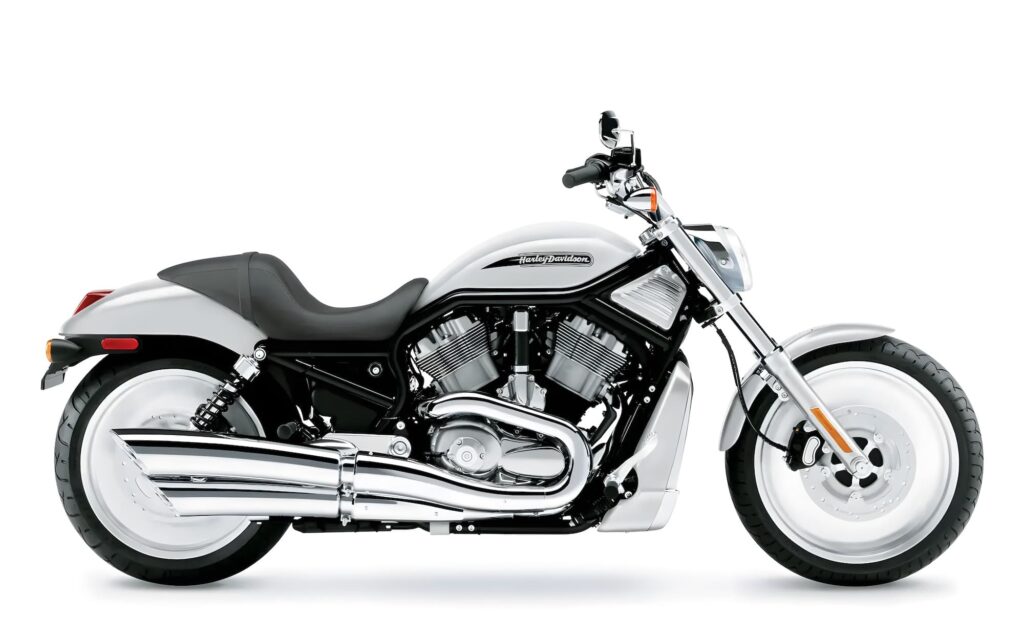
Because the VRSCB was only made in 2004 and 2005, it never got the 2006 model’s Brembo brakes.
VRSCR Street Rod (2006-2007)
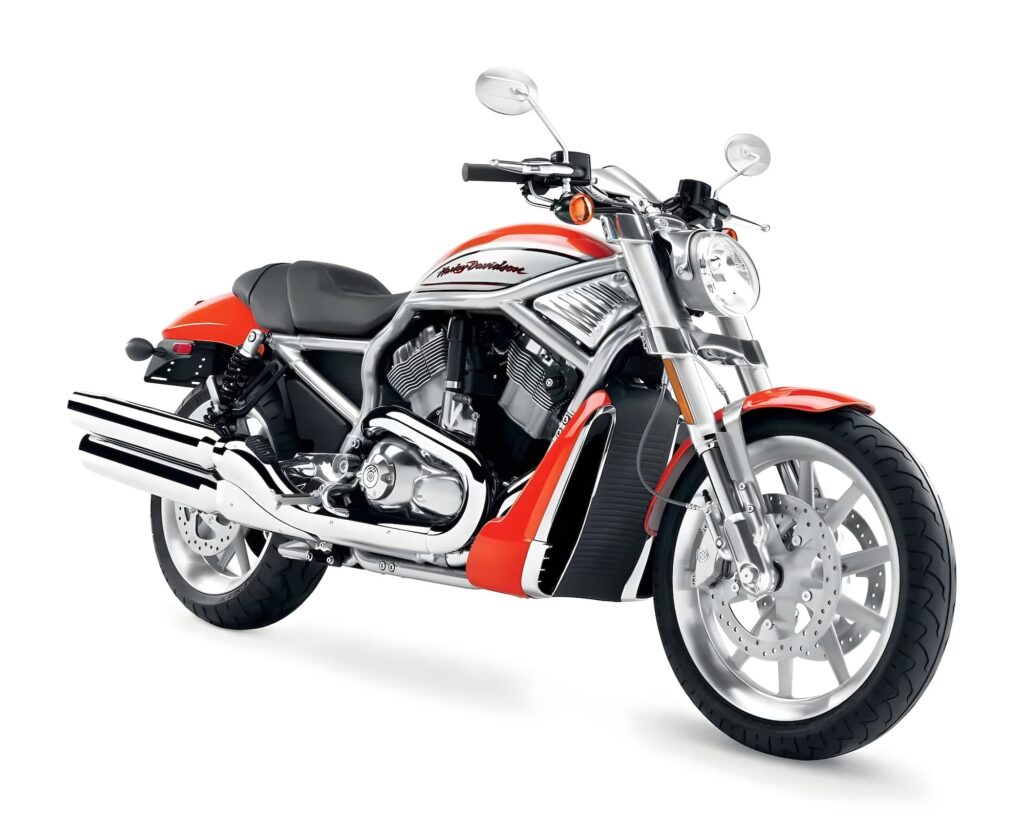
The Harley-Davidson VRSCR Street Rod was the first notable change to the VRSC line. In fact, to date, it remains the most distinct of the line.
The VRSCR has mid controls, the 1130 motor, and a 180-profile rear tire. It is one of only two models to have mid controls. The only other one (aside from the very limited V-Rod Destroyer) is the VRSCD.
But it didn’t just stop at mid controls. Harley-Davidson gave the VRSCR twin disc brakes with Brembo brake callipers (with braided brake lines), a 43mm inverted fork (the upper tubes are 55mm), and even an 18.9 L / 5-gallon tank.
In case you’re a cruiser tragic and don’t think much about inverted forks, here’s a guide to fork technology. In a nutshell, inverting forks increases rigidity (as you get to bolt the frame to a bigger fork upper) and reduces unsprung mass, which means that the wheel moves up and down more easily and thus sticks to the pavement better.
Of course, in a cruiser with heavy wheels, unsprung mass is less of a concern, so some think the inverted fork setup is more of a vanity option. One downside of the inverted fork (from age, wheelies, or both) is that a busted seal means all the fork liquid comes out. So it has pros and cons.
Some other Harley-Davidson V-Rod models got an inverted fork, though. The three V-Rod models to get an inverted fork were the 2006-7 VRSCR Street Rod, the 2009+ VRSCF V-Rod Muscle, and the 2012+ VRSCDX Night Rod. (The Night Rod was made from 2007, but the 2007-2011 models had a conventional fork.)
Other notes on the suspension setup — the VRSCR has a much steeper fork rake, too, with 32 degrees, down from the lazy 38 degrees of the VRSCA / B, and also down compared to later models. And the VRSCR has 5 inches / 127 mm of suspension travel front and rear, compared to the 3.94 / 2.36 in (100 / 60 mm) in the VRSCA.
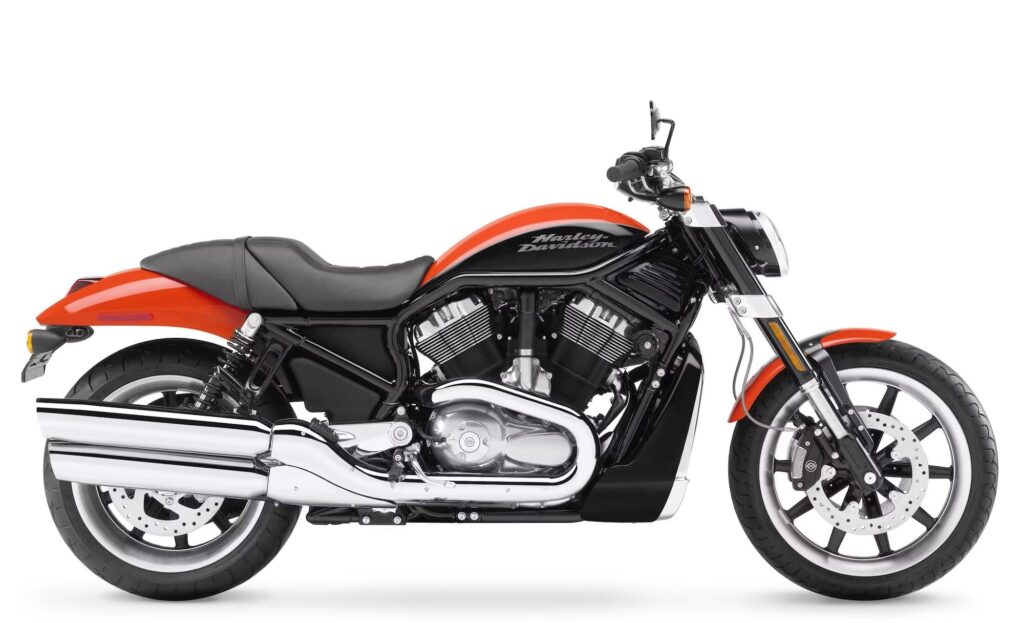
The combination of the steeper rake, longer travel suspension, and higher footpegs means that the VRSCR has decent ground cornering clearance of 40 degrees, much higher than the 32 degrees of the VRSCA / B, or indeed any other V-Rod. Thus, the VRSCR is known as the sportiest of the V-Rod line, as it can actually lean!
Sadly, the VRSCR was only made for two short years, and never got the bigger 1250 engine.
As I’m mostly a standard and sport bike rider, the VRSCR is my pick of the bunch. But they’re thin on the ground, and getting old, so in some ways, a Sportster S with mid controls is technically probably a better used buy. Just not as cool.
VRSCD/A Night Rod (2006-2008)
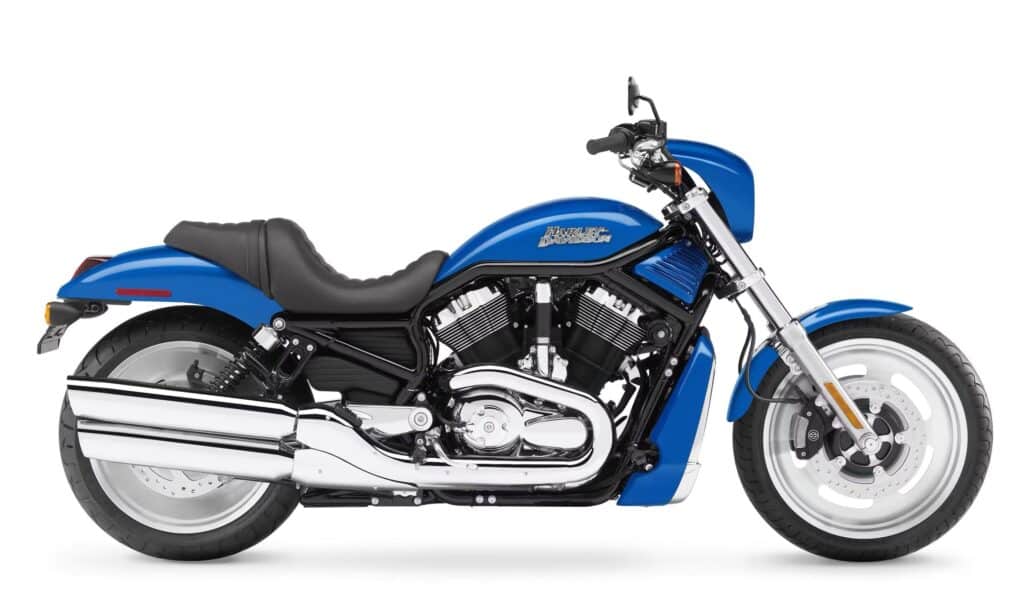
The VRSCD Night Rod was a short-lived model that was an intro to the Night Rod line. The VRSCD is a V-Rod with a blacked-out engine and frame, though with still a lot of chrome.
Notably, the VRSCD Night Rod has rear sets (a.k.a. mid controls, though with highway pegs for stretching out), and a 180 rear tire. So it’s a sporty one, too.
Harley-Davidson also increased the rear wheel suspension travel and gave the VRSCD a slightly steeper rake than the original V-Rods. But they still rate left and right clearance as 32 degrees.
In 2008, Harley-Davidson updated the VRSCD to the 1250 engine, and even gave it optional ABS.
The 2008 version is ostensibly the same motorcycle — same conventional forks, same 180-profile rear tire, same mid controls — but with the bigger motor. Oh, also, they made the rims black.
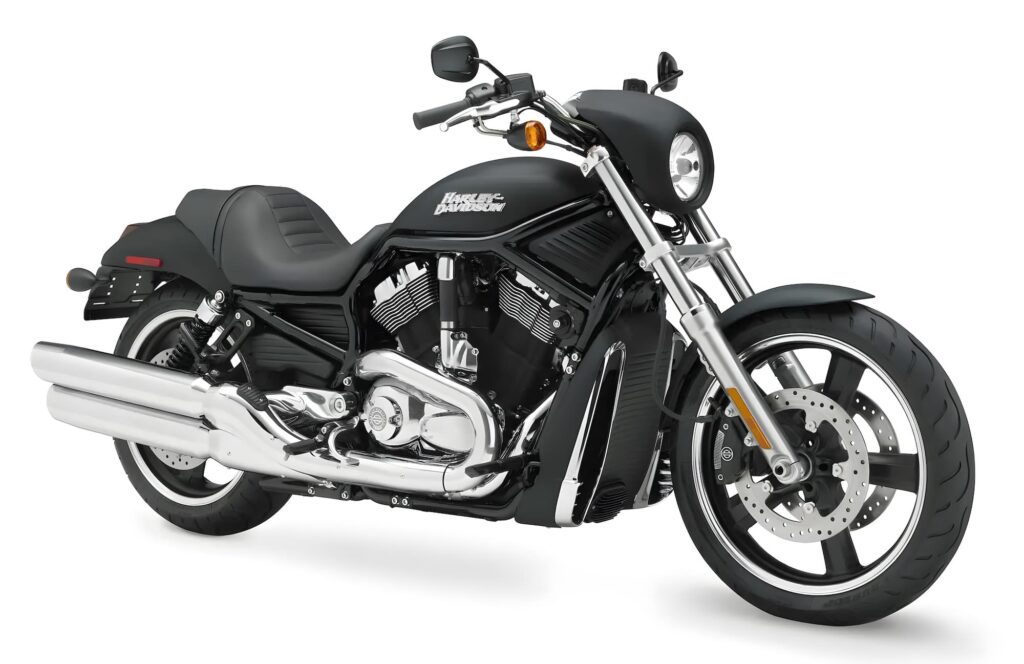
If you’re thinking “Hey, this is like the VRSCR, but you can get it with the 1250 motor!” — well, not quite. Sure, it has mid controls and a 180 tire. But it doesn’t have the same longer-travel suspension, the fork isn’t inverted, and the steering angle isn’t quite as steep (though only off by a couple of degrees). Still, pretty good!
The VRSCD/A Night Rod was the last V-Rod to have mid controls. RIP.
CVO/Screamin’ Eagle V-Rods (VRSCSE / VRSCSE2 / VRSCX / VRXSE) (2005-2007)
There was a brief run of CVO/Screamin’ Eagle V-Rods between 2005 and 2007. These are all highly sought-after and rare.
Firstly, there was the VRSCSE in 2005.
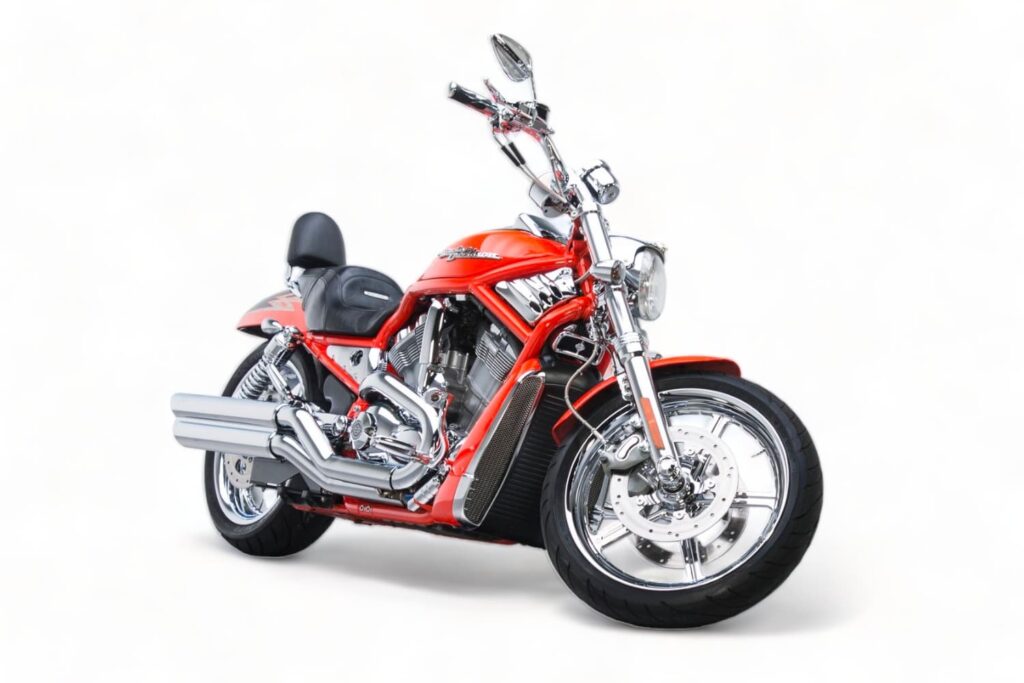
The first Screamin’ Eagle V-Rod was based on the VRSCA, but got the 1,247 cc engine with CNC ported heads. So this was the first V-Rod with the 1250 motor.
The 2006 VRSCSE2 was an update on the original SE, but with a 240 mm rear tire mounted on an 18-inch rear wheel. There’s a wider 21-mm rear drive belt to suit, and five-spoke rims stock.
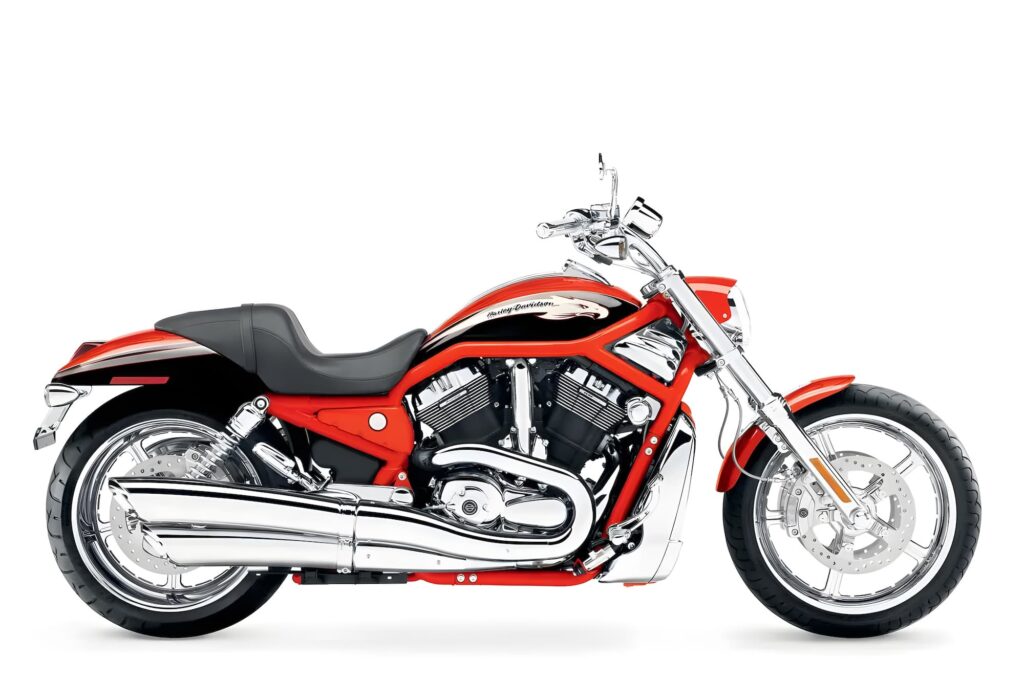
Harley-Davidson re-styled the CVO V-Rod again with the 2007 VRSCX.
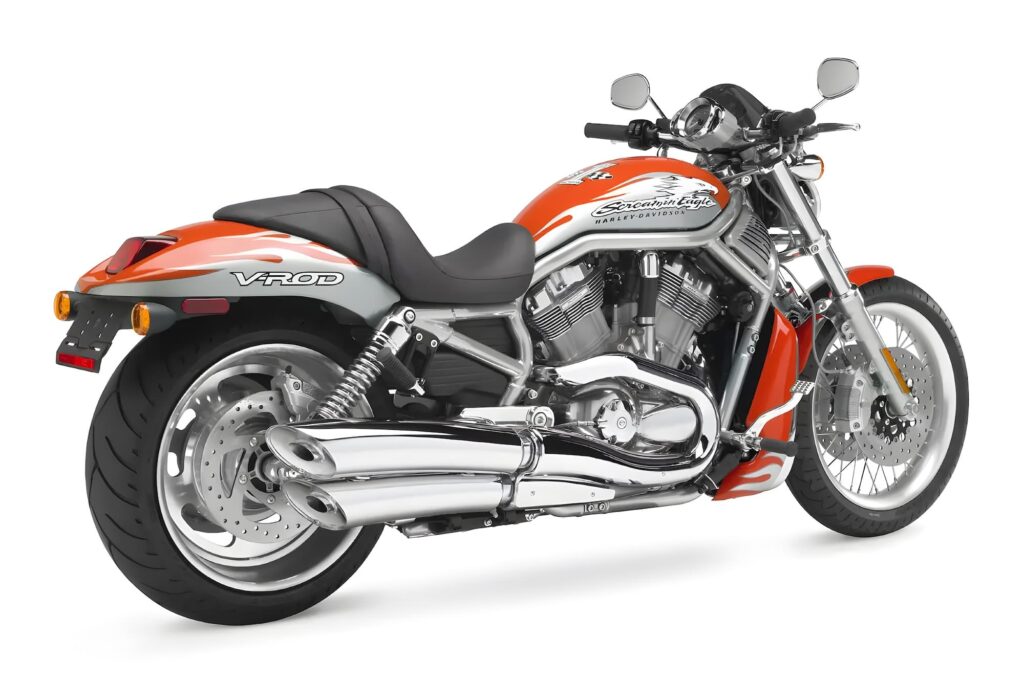
The VRSCX came with the same engine and 240-profile tire, but gained a 5-gallon tank and further-forward drag-style handlebars. Only 1,400 were produced.
Finally, Harley-Davidson made the VRXSE, also known as the V-Rod Destroyer. Note it’s “VRXSE” — this isn’t even a VRSC, per the name.
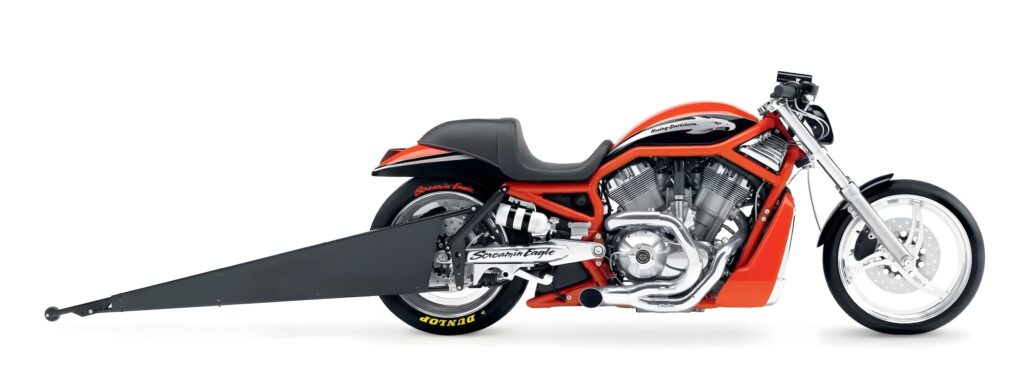
This was a limited-run V-Rod that wasn’t even street legal — but still, Harley sold 650 units (625 to the public). It’s purpose-built for the drag strip.
The V-Rod Destroyer has a longer-stroke 1300cc engine.
| Item | 1130 engine | 1250 engine | VRXSE |
|---|---|---|---|
| Displacement (cc) | 1131 | 1247 | 1300 |
| Bore (mm) | 100 | 105 | 105 |
| Stroke (mm) | 72 | 72 | 75 |
| Compression ratio | 11.3:1 | 11.5:1 | 14.5:1 |
The engine is tuned for a whopping 170 rear wheel horsepower at 9700 rpm. It’s obviously very highly tuned (that compression ratio is sky-high!)… I’d presume people would run it on race fuel. There’s better breathing for the engine, too, in the shape of larger 58 mm throttle bodies, high-lift and long-duration cams, and high-flow cylinder heads.
The VRXSE has even further forward race handlebars, rear-set footpegs, and an emergency shut-off tether.
A lot of other stuff is customised for racing. The stroker engine has high-strength cylinders and cases and forged pistons, a racing transmission, and a very non-street-legal-looking exhaust.
OK, back to reality!
VRSCAW V-Rod (2007-2010)
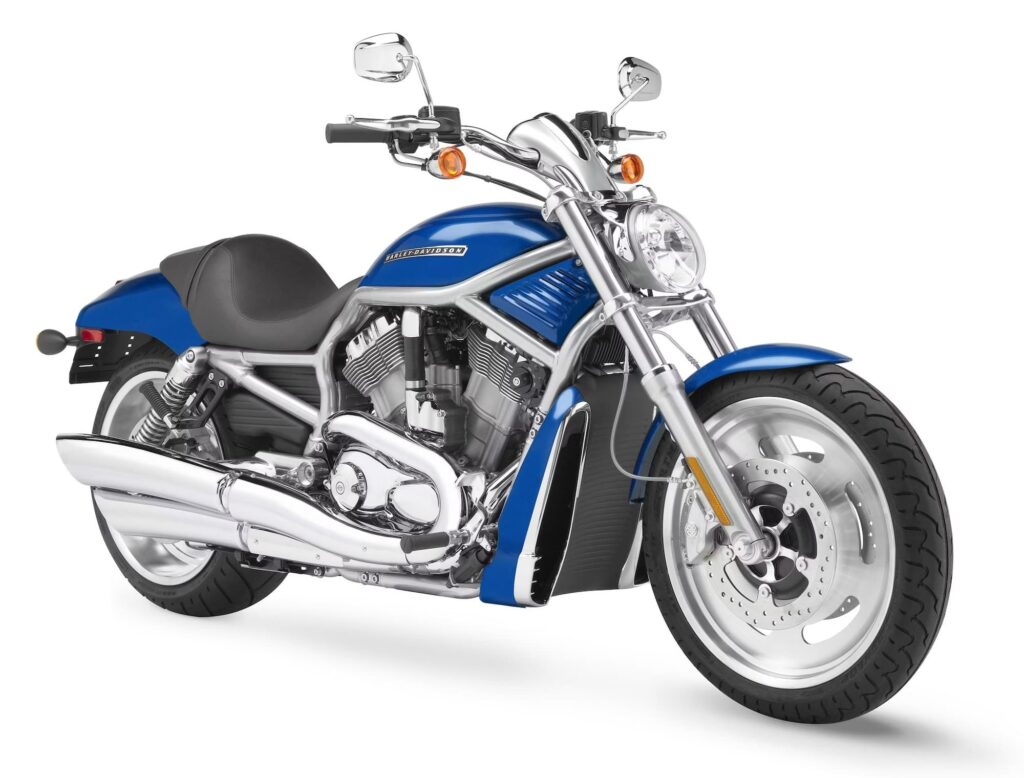
The VRSCAW V-Rod is the gateway drug for the future V-Rod line that would all have a fat 240 profile rear tyre. The 2007 model is essentially the same as the VRSCA — same 1130 engine — but with the bigger rear tire. Thus, the first year 2007 is known as being the slowest of the V-Rod line. (Not that it’s much slower, and not that any of them is particularly fast in the scheme of things.)
Below you can see two motorcycles from the 2007 line-up with their rear tire in proportion (er, give or take, it’s hard to get the scale exactly right). Anyway, it’s plain to see that the 240 rear tire is a lot fatter.
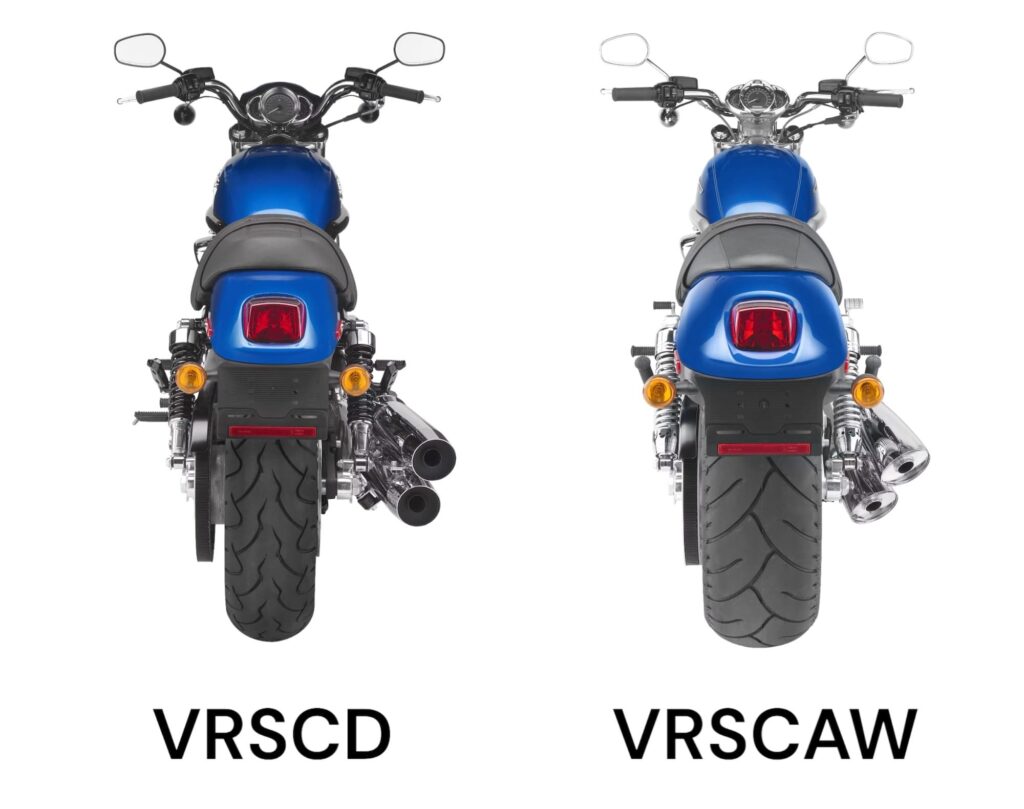
But is the 240 rear profile better? It’s more of a hindrance to handling than it is a boon. Some motorcycles handle better despite their 240-profile tire. But the VRSC line always fought against it a bit. As much as I like the aesthetics of a fat rear tire, in reality, I prefer a thinner one.
In 2008, Harley-Davidson gave the VRSCAW the same treatment as the rest of the V-Rod line, with the 1250 motor, slipper clutch, and optional ABS. The bike generally looks the same, aside from the label on the motor.
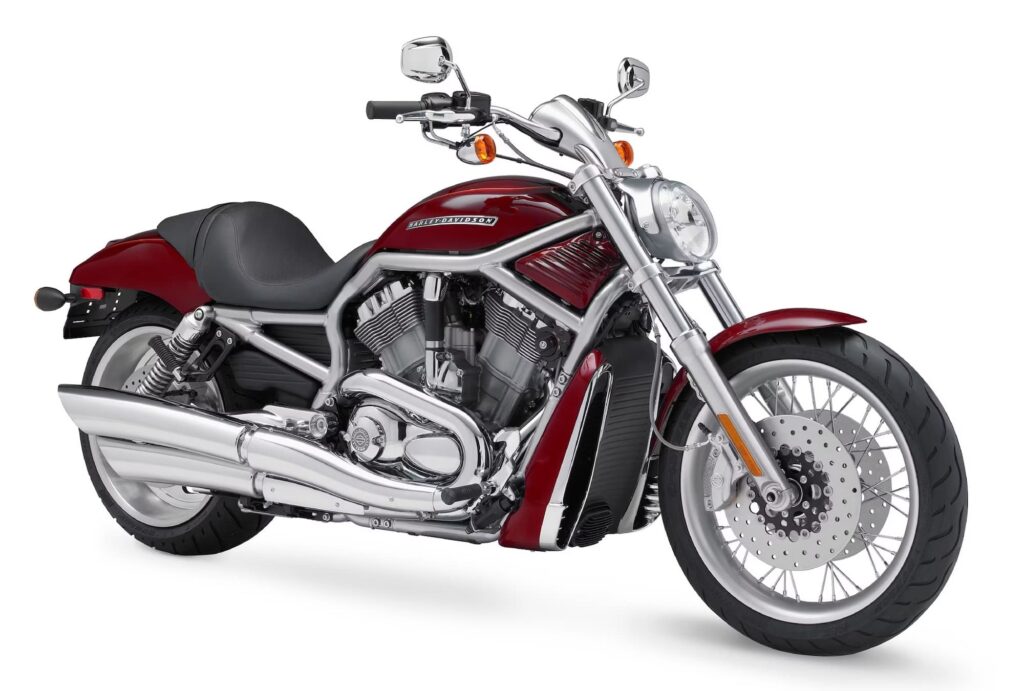
Harley-Davidson stopped producing the VRSCAW in 2010. But after that, all the V-Rods would have 240-profile rear tyres.
VRSCDX Night Rod Special (2007-2017)
Harley-Davidson introduced one of its most popular models, the VRSCDX Night Rod Special, in 2007. The Night Rod Special is an even further blacked-out V-Rod with a 240-profile rear tire. The VRSCDX has forward controls and drag-style handlebars.
One visually distinctive feature of the many VRSCDX paint schemes is the contrasting racing stripe down the middle of the tank. They don’t all have the stripes, but the ones that do really pop.
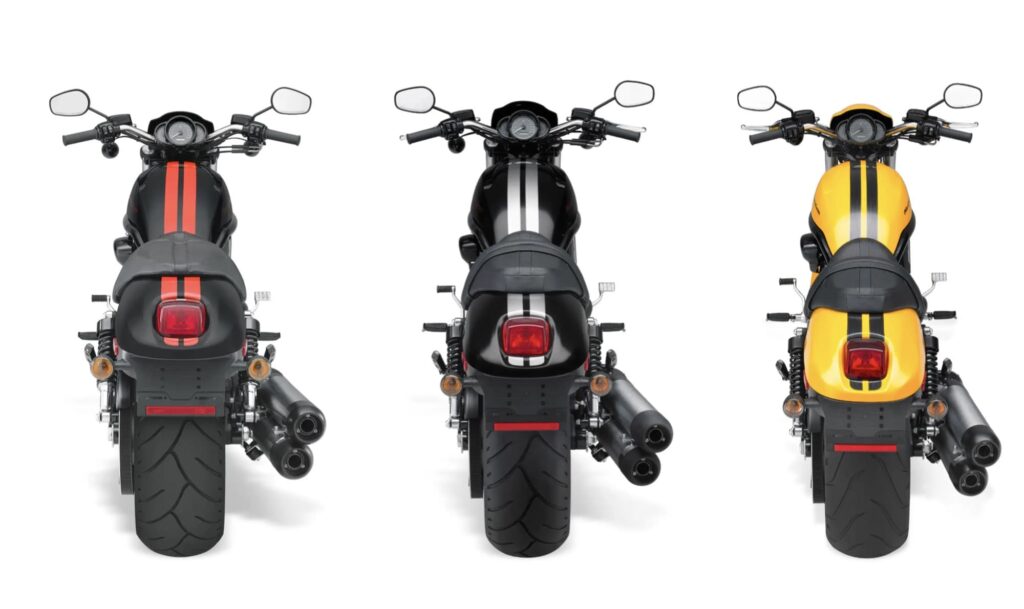
In 2007, there was one funky year of the VRSCDX that was different from the 2008-onward models. The 2007 model had the 1130 motor and a conventional fork, and lacked ABS. This was the one that I recently rode. They say it’s the slowest VRSC, but it didn’t feel slow.
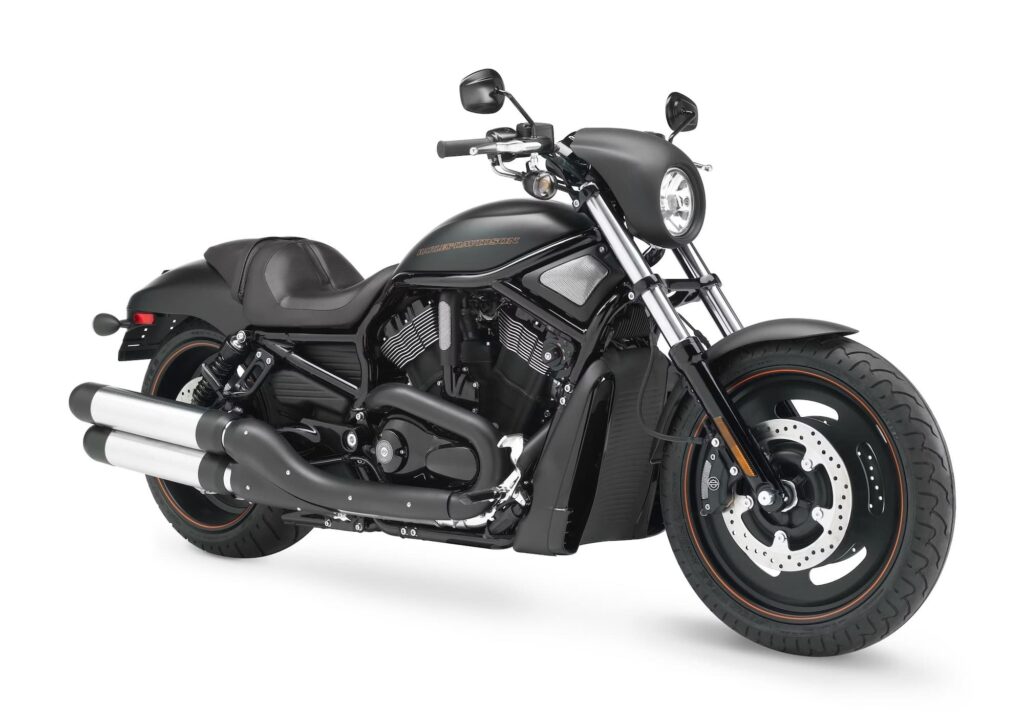
But from 2008 onward, Harley-Davidson rectified this imbalance with the 1250 motor, capable of 125 hp at 8250 rpm. The 2008-onward models also have a slipper clutch and optional ABS. It looks effectively visually identical, though there’s a “1250” badge on the motor.
In 2012, Harley-Davidson released a 10th anniversary edition of the VRSCDX all in silver — so it’s a Night Rod that’s the opposite of blacked out. Day Rod?
The Anniversary Edition also got a straight-shot exhaust with chrome slash-cut mufflers. Of course, many VRSC owners ditch the basic exhaust — but they may be slightly less wont to do so for the 2012 Anniversary Edition.
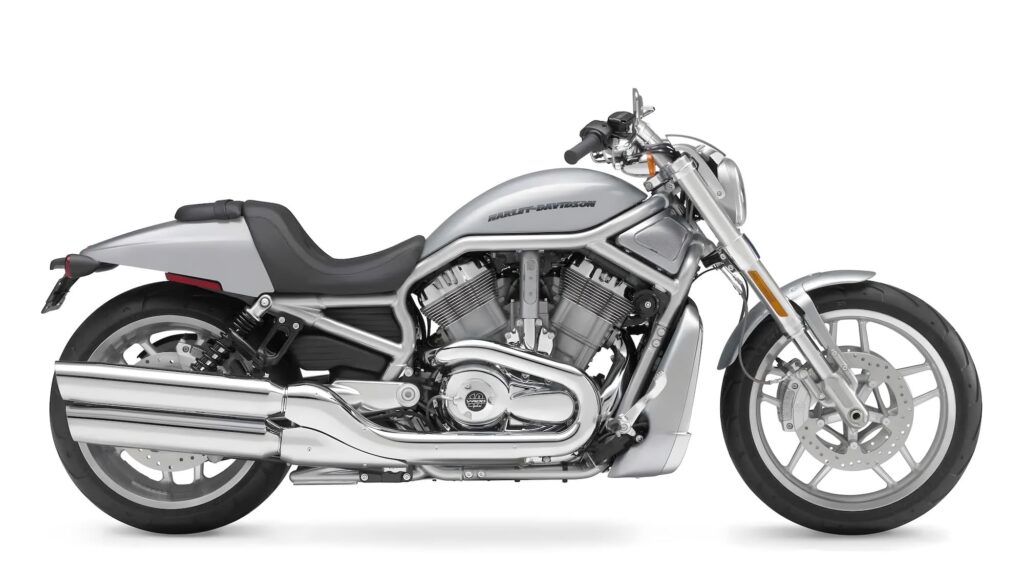
The Special edition — and also other 2012-onward models — got a few notable changes. The most prominent change is the inverted fork, like on the VRSCR Street Rod.
Harley-Davidson also gave the 2012-onward VRSCDX a few other changes:
- Pullback handlebars with less reach than the drag-style bars of the earlier models.
- Reduced reach forward mount controls (still not mid controls)
- Lighter five-spoke wheels
- A different seat
And from 2014, ABS became standard, rather than an option.
The VRSCDX Night Rod Special was the second of the two last V-Rods to be produced, along with the V-Rod Muscle. As such, they’re pretty expensive on the used market.
There are many Night Rods for sale, but they’re expensive, and often highly modified, with things like huge wheels, high bars, and paint jobs. You have to make sure that you know what the standard kit is, and that the modifications are to your taste.
VRSCF V-Rod Muscle (2009-2017)
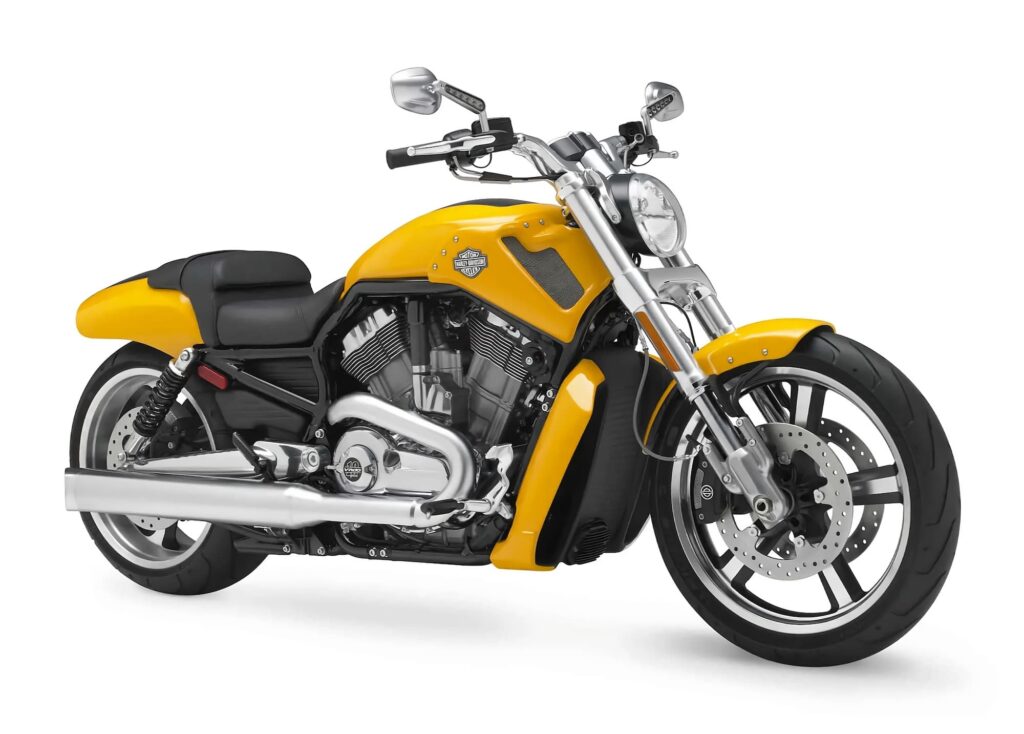
The last model released of the Harley-Davidson V-Rod was the V-Rod Muscle. Harley-Davidson released it for the 2009 model year, and made it until the V-Rod was retired.
The V-Rod Muscle is a styling exercise. It has things like integrated lights in the mirrors, a uniquely- styled exhaust, twin silencers (one on each side), and a unique brake light.
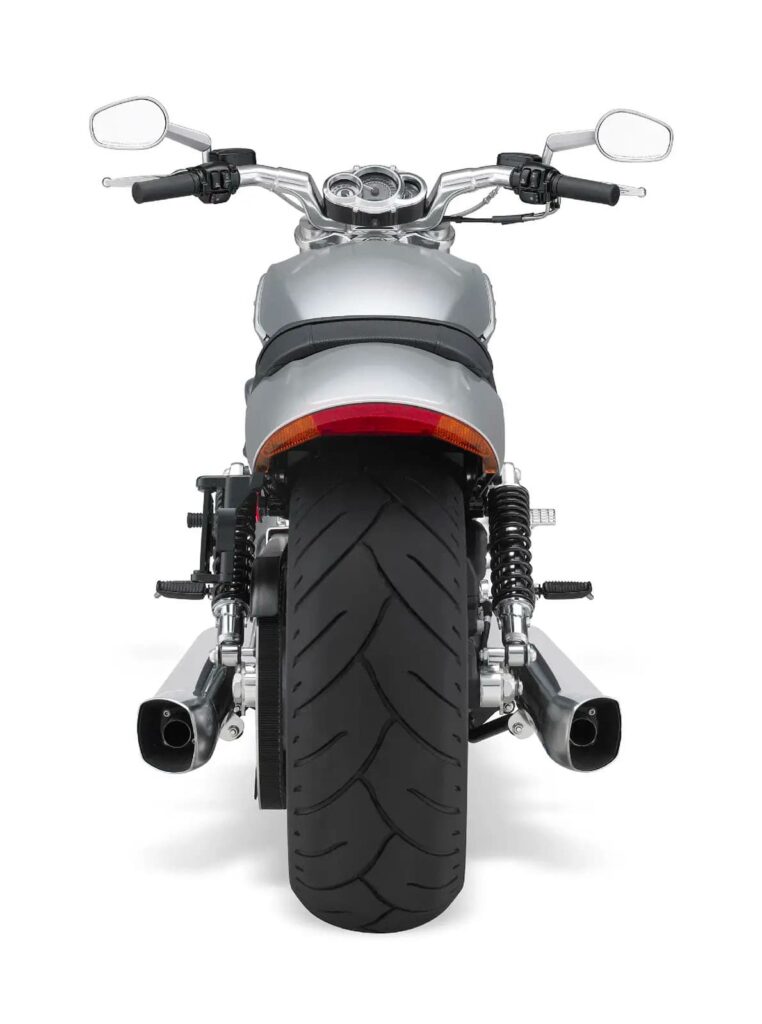
So the first V-Rod Muscle, a 2009 model year machine, had the 1250 motor as standard (which came in 2008 to the V-Rod line), as well as the other things that motor came with, including a slipper clutch and optional ABS brakes.
The V-Rod muscle also always had inverted forks — from the first model.
There are a few things that distinguish the V-Rod muscle. Ostensibly, it looks much the same — it’s a cruiser with forward controls.
But the things that distinguish the VRSCF are
- Twin silencers — it’s the only model to have these as standard
- Turn signals integrated into the mirrors at the front
- A combination stop/tail/turn signal light at the rear, tucked under the fender
- Side-mount license plate (a popular option on other Harleys in general
ABS became standard in 2014 on the VRSCF, like on the VRSCDX.
Competitors / Alternatives to the V-Rod
If you’re looking at a V-Rod, which is a high-performance cruiser with a liquid-cooled engine, you might be thinking… wait, isn’t this the metric world’s wheelhouse? Shouldn’t there be some alternatives?
Indeed there are. Below are what I think are the main bikes to consider if you’re thinking of a Harley-Davidson V-Rod.
Ducati Diavel / XDiavel
The Ducati Diavel and Ducati XDiavel are Ducati’s similarly-named but slightly different feet-forward power cruisers. The Diavel has more of a neutral riding position, and has come with an evolution of engines from the 1200 through to the VR, while the XDiavel is feet-forward, and only came with the 1262 cc engine
Both the Diavel and XDiavel have striking looks, with a wide-profile rear tire, exposed rear wheel on a single-sided swing arm, and loads of power.
The Diavel and XDiavel are distinct in the cruiser segment for being powerful and good handlers. They’re lightweight, for cruisers, and have high-end suspension and braking.
Quite a lot has changed since the first Diavel — the latest one has the V4 Granturismo motor with huge amounts of power and torque and very wide service intervals.
See more here in the Ducati Diavel / XDiavel buyer’s guide.
Honda Valkryie GL1500 / GL1800
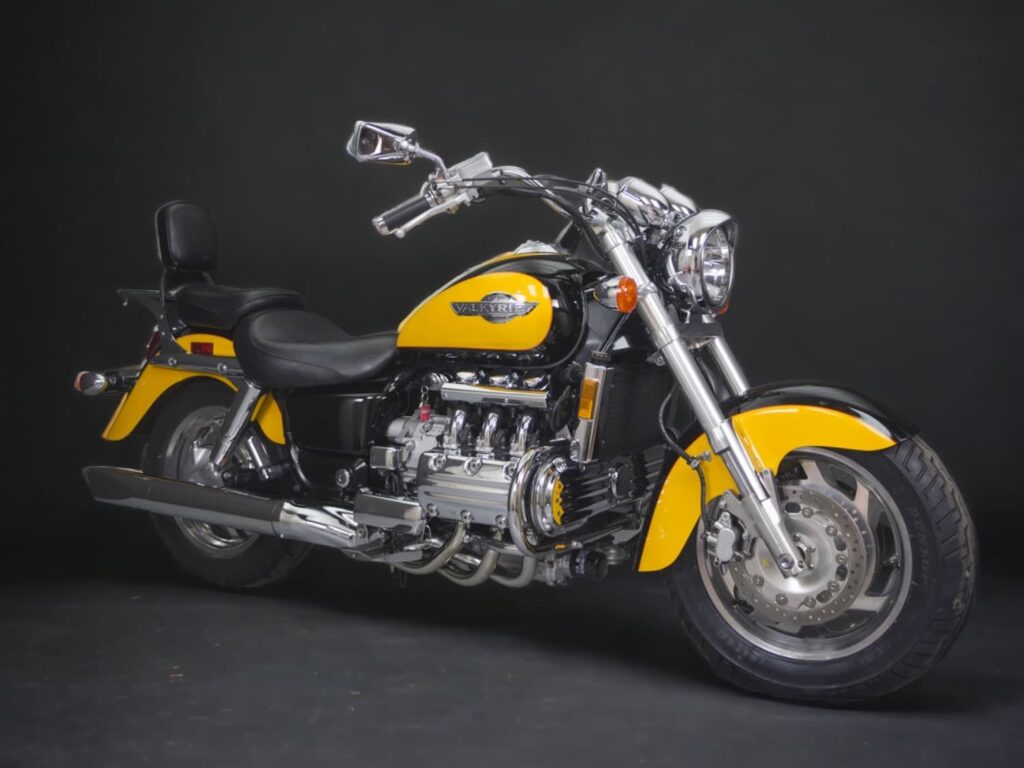
The Honda Valkyrie is Honda’s power cruiser, based on the flat six engine derived from the one in the Honda Gold Wing.
But the Valkyrie is no sedate cruiser. For the first-generation GL1500, Honda redesigned the engine considerably. The engine is still a 1500 cc 2-valve-per-cylinder boxer six but has six individual carburettors and spring-return valves, rather than the self-adjusting hydraulic valves of the GL1500 Gold Wing. This lets it breathe and rev more easily, giving it peak torque of 96 lb-ft / 130 Nm at 5000 rpm, and peak power of 73 kW / 100 hp at 6000 rpm.
Most importantly, the Valkyrie sounds like a demon. It often has six-into-six exhausts on it and revs like an air-cooled Porsche 911.
The GL1500 Valkyrie has a five-speed transmission and a shaft final drive.
The second-gen Valkyrie F6C, based on the 5th-gen Gold Wing GL1800’s engine, is more sedate in terms of style and power delivery, but is still a more Honda-esque alternative in the power cruiser segment.
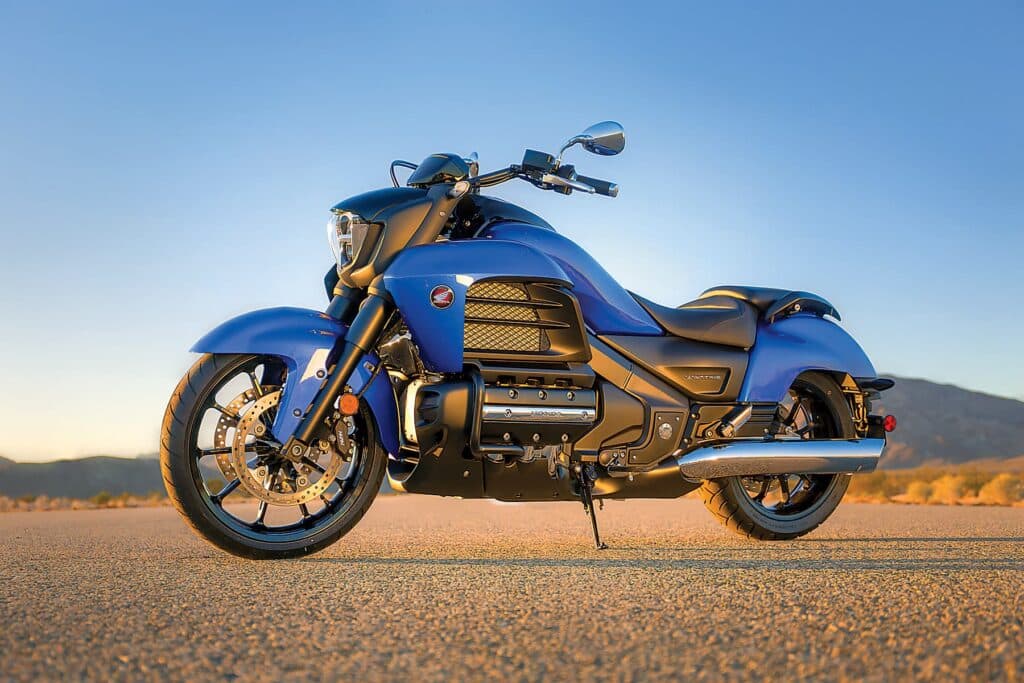
Again, the GL1800 Valkyrie has mid controls. This version is fuel-injected and comes with a straight twin exhaust which is less frequently swapped with an aftermarket unit.
Suzuki Boulevard M109R
The Suzuki Boulevard M109R isn’t a perfect alternative to the V-Rod line. It never came with mid controls, for starters, and it has a huge engine that’s around 50% larger in capacity, despite not producing more power. It’s also heavier.
So the M109R doesn’t rev as high. But its liquid-cooled V-twin is still high-power (for a cruiser) and full of torque. The M109R is a looker, too, with a unique style that is not an obvious attempt to hawk what Harley-Davidson achieved in the cruiser segment. There are so many M109R models that are nice to look at that I couldn’t help but put together a guide to my favourite colour schemes.
The M109R has a shaft final drive, and never even came with ABS. Remarkably, it’s still being sold new in some markets (US, at least), so they’re not as hard to get a hold of, nor as expensive as the alternatives.
Triumph Rocket III / 3
Triumph has been making the Biggest Production Motorcycle in the World (in terms of displacement) for a long time. In fact, its 2004 Triumph Rocket III laid claim to the title with the Rocket III with its 2,294 cc engine, and then Triumph claimed it again in 2020 with the 2458 cc engine with the Rocket 3.
Both motorcycles are powered by a liquid-cooled three-cylinder engine and put power down via a shaft drive. They’re quite high power, with the original Rocket III making 110 kW / 148 hp at 5750 rpm, and the Rocket 3’s engine peaking at 123 kW / 165 hp at 6000 rpm.
The Rocket III and Rocket 3 came in various trims, with different creature comforts and foot positions. The Modern Rocket 3 R is the roadster, and the Rocket 3 GT is the touring bike, with a more relaxed and upright riding position. Both are comfy, though.
The Rocket 3 is still being made. But it’s a premium bike, and quite pricey.
Yamaha VMAX 1200 / V-Max 1700
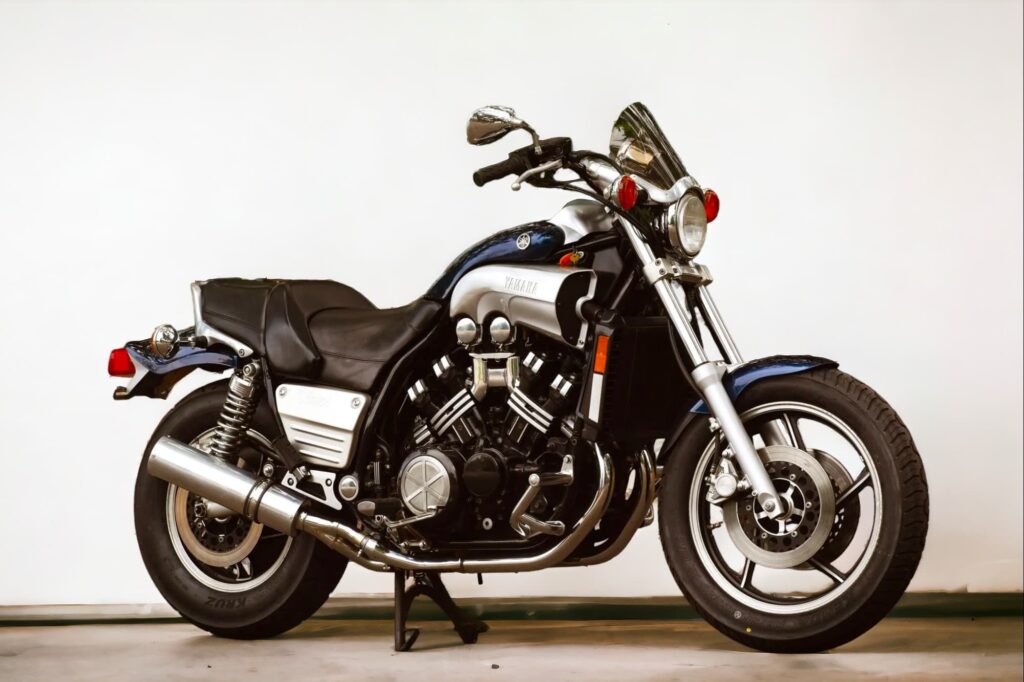
Finally, we have to consider the Yamaha VMAX, which was how the 1200 model was named, and the V-Max, which is what the later 1700 model was called.
If you want to detach your shoulders from their sockets in a hurry, the V-Max / VMAX is your pick.
Yamaha built the V-Max between 1985 and 2007 (with only minor modifications, unbelievably), and then the VMAX 1700 between 2008 and 2020.
The V-Max and VMAX are both powered by liquid-cooled V4 engines. The first-generation V-Max is powered by a carburettor-fuelled V4 tuned to make 145 hp at 9000 rpm (at the crankshaft). It was criticised for its handling and weight, but well-liked, anyway.
The V-Max had an unusual bit of tech — V-Boost, which gradually opens butterfly valves in the intake manifolds between cylinders on each bank with rising RPM. The way it works is that normally, there’s one carburettor per cylinder. When V-Boost activates, each cylinder effectively gets two carburettors (as their intake strokes are not at the same time), letting them breathe a lot more. Clever!
The VMAX 1700 was a huge improvement — much more power, and much better handling.
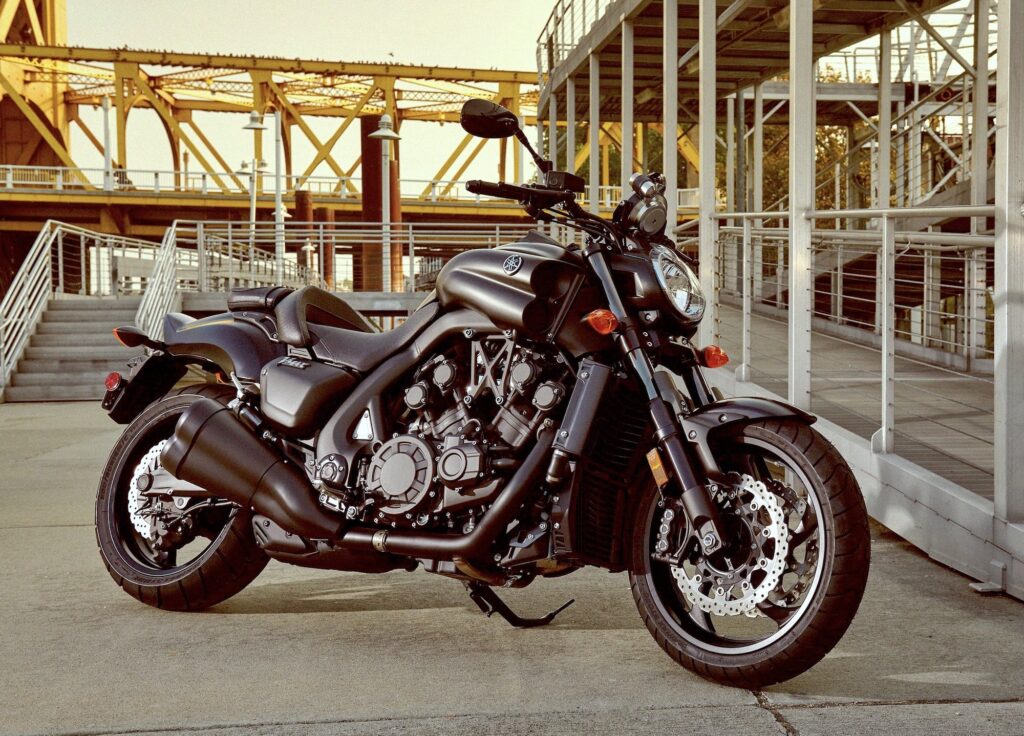
The 2008-2010 VMAX 1700 is powered by a 1697 cc V4 that puts out 147 kW / 197 hp at 9000 rpm. It still has only a five-speed box and shaft drive, but gains a slipper clutch. The power output is in Suzuki Hayabusa territory!
The VMAX 1700 has a lot of other tech — YCC-I, ride-by-wire, and even standard ABS.
Other contenders
There are a few other high-performance cruisers in the world. There’s the Yamaha Raider XV1900, the Honda VTX1800, and some more. I acknowledge they exist and that they’re good bikes. I just think it’s going over the top to include them all!
I mentioned the Indian Scout Bobber in the article about the VRSCDX, but it’s not a generic enough alternative to the whole V-Rod line, and I don’t want to double up content too much. Anyway, you might consider it, too.
After the V-Rod — The Sportster S
The V-Rod’s Revolution engine wasn’t the last liquid-cooled high-power engine Harley-Davidson would produce. It was inspiration for the next-gen motor — the Revolution Max.
The Rev Max motor debuted in the Harley-Davidson Pan America, an adventure touring bike. But Harley brought it to a street bike in 2021 with the Sportster S.
The 2021 Harley-Davidson Sportster S is a really interesting bike from Harley-Davidson. It has a brilliant engine, it’s loaded with tech, it looks great… and, for some reason, it has forward controls and a high-ish seat that make me feel (and look) like I’m on the bike, not in it.
Aesthetically, the Sportster S looks a bit like a Fat Bob. But it doesn’t quite feel like one. For a Harley, the Sportster is light, powerful, and very advanced. It has the same general power-to-weight ratio as most everyday street bikes, something like the BMW R nineT. This bike’s liquid-cooled “Revolution X” motor makes 90 kW / 121 hp at 7500 rpm, and ride aids include cruise control and even an IMU (cornering ABS)! (See here for other bikes with an IMU / cornering ABS.)
The Sportster S takes over from the “Evo” Sportster line. But it’s entirely different. It’s actually sporty! I just wish there was something like this in a riding position I liked — the fat front tire and the forward controls betray its abilities slightly, and mids don’t solve it. I’d customize one if I had the resources.
See here for my impressions riding the Harley-Davidson Sportster S.
One cool and very underrated thing about the Sportster S is that, like many Harley-Davidsons (but in contrast with the V-Rod), it has no hydraulic valve lash adjusters, which means no valve service requirements.
Wrap-up
The Harley-Davidson V-Rod is an awesome bike to try. Like the Hayabusa, Porsche 911, or Ducati Panigale, the name “V-Rod” has a lot of brand power. A lot of people have opinions on the V-Rod, whether Harley owners or not.
Unlike many other bikes, riding the V-Rod is hard to explain. The combination of the engine, chassis, and tire is unique enough that trying it is worthwhile, even for seasoned riders who can kind of “guess” what many bikes are like. I tried to guess, and I got it wrong!
If you’re in the US, try Riders Share or Twisted Road for a rental. Otherwise, hit up your local Harley dealer and see if you can sweet-talk your way into a test ride. It’s worth it.

